Benny Lewis's Blog, page 78
August 31, 2016
What’s it Like to Be a Language Hacker?

While the courses are en route, I've got together a group of language learners who are trying out the courses ahead of time, sharing videos from the missions, and giving me their feedback.
We've got people from all around the world and of all ages in the group - from teenage language learners to people in their 80s.
Here's what they're telling us so far, having finished Unit 1 of the course.
Read on, and you'll pick up a few language hacks from the courses too.
"Nothing like studying at school"
There are thousands of dedicated language teachers in schools all around the world - and many, many of them do an amazing job.
Even so, perhaps because of the syllabus, or the course books, not everyone has a positive experience of learning languages at school.
Just finished Unit 1 Spanish. Hurra! This is not painful at all. Nothing like studying at school or evening classes. I was pleasantly surprised at how easy it was to follow. I am going to enjoy this experience. - Julie Englefield
I studied German for five years at school, and even after that I still struggled with basic tasks such as ordering a meal in a restaurant. I know many other people who've had a similar experience.
This happens because school courses typically focus on reading and writing a language.
Language Hacking, by contrast, focuses on speaking your new language, so you can use it with real people, by interacting with them in real-world conversations, right away.
"Small tips that give big results early on"
Have you ever heard of the Pareto Principle? It's also called the 80-20 rule.
The Italian economist Vilfredo Pareto came up with the principle when he noticed that 80% of the land in Italy was owned by 20% of the population. He then noticed that 20% of the pea-pods in his garden contained 80% of the peas.
It's quite refreshing to see a casual but practical course like this... I do like how it eases you into it, starting with short dialogues that are explained in an everyday way. And even though we are encouraged to make mistakes, I appreciate how you point out things like "Ich bin Lehrer" is natural vs. "Ich bin ein Lehrer." Small tips that give big results early on. - Daniel
You might have noticed the Pareto Principle in one of the following ways:
20% of the people at your office do 80% of the work
20% of the websites you visit take up 80% of your internet time
20% of the apps on your smartphone are the ones you use 80% of the time
When I created the Language Hacking courses, I asked myself: "What's the 20% of the work that language learners can do to get 80% of the results?"
I want language learners to get big results for a small amount of effort. Why? Because when you see yourself making fast progress, you're motivated to continue learning.
That's why I don't teach you everything about a language in the Language Hacking courses. Instead, I teach you what you need to know to start having real conversations, today.
"I like the focus on me-specific language"
Learning me-specific language is one of my favourite language hacks.
It involves learning the words and phrases that are relevant to you, right from day one. That way, you're ready to talk about yourself and dive into real-life conversations.
"I like the focus on me-specific language, as this really differentiates the course from other products. I feel pushed and hopeful that I will make progress fast. The little grammar snippets are not overwhelming... The presentation of how to guess cognates was particularly helpful." - Kevin Crisp
In the courses, I show language learners how to build me-specific scripts. I provide the foundation script (in Spanish, French, Italian or German), and you, the learner, build your own unique script on top of it.
Through the course, you build more and more me-specific scripts.
"I've been revisiting my Spanish via Duolingo and it's good but I'm not sure I'll need "los elefantes beben leche" (elephants drink milk) at my stepson's wedding in Colombia next year. I shall be armed with my own personal scripts!" - Julie Englefield
You can memorise these scripts as mini-monologues, and rely on them whenever you're asked questions. You'll be ready to manage all the most common situations you come across in your new language.
"Very practical and useful" (The Curtains Method)
One of the things we wanted to avoid with the course is making you learn unnecessary words and phrases.
So many courses have long vocabulary lists in every unit. And you feel like you have to learn them because they're part of the course, right? Even if you're asking yourself: "when will I ever use this word?"
"All these sentences from the course we will use very likely when we go to a foreign country. It's like a survival kit for talking with natives in a foreign country. Very practical and useful." - Vladamir Velickovic
That's why, when I created the Language Hacking courses, I followed The Curtains Method.
I learned The Curtains Method from Joseph, a member of the Fluent in 3 Months team. When he studied Mandarin, he focused on learning the words he knew he'd use a lot, and ignored those he was sure he'd rarely or never use. He felt particularly frustrated that the word "curtains" was taught early in the course. When would he ever need to say "curtains" in an everyday conversationas a beginner?
Rather than "never" learning them, words like that are best left for intermediate learners. It's simply a bad use of a beginner's time to learn such words when there are way more essential ones they should know.
"I really like the personalized approach: we can all add vocabulary that is relevant specifically to us instead of focusing on vocab we do not necessarily need in the beginning. I also like the way all content in a unit nicely builds up towards enabling students to complete the mission. It makes the material very coherent." - Magda Kasprzyk
That's how the The Curtains Method was born. In the Language Hacking courses, I only ask you to learn words and phrases that you'll actually use.
"TOTALLY embracing my inner Tarzan"
When you start learning a language, the most important thing is that you're able to communicate. That way, you can use the language in real conversations and make progress fast. Perfect grammar can wait for later.
That's why I advocate embracing your "inner Tarzan".
"TOTALLY embracing my inner Tarzan right now. For YEARS, being afraid to sound like that had been the reason why I didn't attempt to speak another language." - Stacy DiGregorio
After you embrace your inner Tarzan, you'll be willing to say things in your target language like 'I Benny. Me writer. I Ireland.’
Sure, it sounds funny. But when you don't take yourself too seriously, you learn much faster.
"Revolutionary"
I've been sharing my Language Hacking approach on Fluent in 3 Months for over five years.
Together with many other language bloggers who share similar ideas to me, I've been edging towards a language learning revolution.
I'm loving the material so far. It's interesting, fun and inspires confidence. I have complete faith that this method will be revolutionary and play a key role in achieving my goal of fluent Spanish. - Dave Gardner
With the launch of the Language Hacking courses, my approach to language learning is about to go mainstream - not just an ebook that I'd have on my site, or a viral YouTube video, but a real course with the most experienced educational publisher on earth.
That's why I'm so excited about the launch.
Even More Feedback on Language Hacking
That's not all! We've had even more great feedback on the Language Hacking courses in so many other ways:
"Encourages me to describe myself"
"I especially like that the book encourages me to describe myself, to find vocabulary useful to me, bicycling, hiking, being a librarian, living near mountains, etc." - Marcia Rodney
"I feel like I am making great progress"
"I love the course and how it is broken down into bite sized chunks. I feel like I am making great progress and not being overloaded. I love the fact that my script is me specific. The audio is very clear so I am able to follow along well." - Darren Robinson
"I love that the book requires you to be active"
"I love that the book requires you to be active all the time. You have to listen carefully, and then find things out yourself. It's really important to be active learners, and the book doesn't allow you to get by without it." - Omer
"Already I feel much more confident"
This course so far ticks the right boxes for getting started in chatting with someone. I'm looking forward to developing my skills. Already I feel much more confident about speaking German even if I make mistakes. Who cares? They know what I'm trying to say. - M. Simpson
Start Language Hacking, Today
Inspiring feedback, right? I for one am pleased to know my courses are helping all these people. And this was just with our test group before it's released to the world in September!
Are you inspired too? If you'd like to become a language hacker, then pre-order your language hacking course. Select the language you want to learn:
Spanish | French | German | Italian
And be sure to check out the pre-order bonuses and pre-order today . Many of the bonuses have limited availability and you can only pre-order for a week more in the UK (just slightly longer in North America), so get your pre-order in now!
The post What’s it Like to Be a Language Hacker? appeared first on Fluent in 3 months - Language Hacking and Travel Tips.




August 23, 2016
6 Tips to Learn Phrasal Verbs in English

I’ve realised that a big gap for English learners is phrasal verbs.
Teaching phrasal verbs has enabled my students to feel more confident and comfortable using English. It's also been a great help for me as a language learner.
That's why I’ve decided to share with you my best tips for learning phrasal verbs in English. If you’re learning English, I’m sure you’ll love these. And if you’re a native English speaker, knowing about phrasal verbs can be a big help with your language learning.
Let’s get started.
What is a Phrasal Verb?
Firstly, let's outline briefly what a phrasal verb actually is!
Have you ever noticed how when you sometimes add a seemingly tiny word like a preposition or an adverb after a verb, the meaning can completely change? Crazy, huh? That's phrasal verbs. They're a little bit wacky.
Let’s look at some examples.
Verb: Pick
“Pick” is just a normal verb, not a phrasal verb. Well, not yet at least. It can mean a few things. Let's focus on one meaning for our example: to select or choose.
We need to pick which meal we’d like to eat.
But look what happens to 'pick' when we add the word 'up'.
Phrasal Verb: Pick Up
Now, as if by some kind of wordplay magic, “pick” has become a phrasal verb. To 'pick up' can actually mean many different things. We’ll look at just four of the possible meanings in this post: to improve, to collect someone or something, and to acquire knowledge.
Let's look at an example for each of these:
Improve: The weather is picking up lately, isn’t it?
Collect someone: Can you pick up Jenny after football practice?
Collect something: Can you pick up my parcel from the post office?
Acquire knowledge: James picked up Spanish really quickly.
Phew! Who'd have thought that the addition of the tiny word 'up' could make such a difference?
Ready to learn some more? Here are my top tips to learn phrasal verbs in English.
1. Transitive or Intransitive
I hate to start by throwing these grammar words at you, but it helps a lot if you can understand the difference between transitive and intransitive verbs when learning phrasal verbs.
You may already be familiar with these words, but if not, here's the jargon-free explanation:
transitive = needs something or someone after the verb
intransitive = stands alone
For example, the phrasal verb 'bump into' means “to meet someone unexpectedly” and always has to be followed by the person you weren't expecting to meet. You can't just say, "Yesterday, I bumped into. Haven't seen her in years!" You have to say instead something like this: "Yesterday, I bumped into Sarah. Haven't seen her in years!"
The exception to this would be if it were a statement that didn’t reveal ‘who’ you ‘bumped into’. For example, “I went to town yesterday. You’ll never guess who I bumped into.” Even here though, ‘who’ is the someone that you met unexpectedly. In the answer, this ‘who’ will change into someone’s name and be placed after ‘bumped into’; it just happens to appear earlier in the sentence.
However, some phrasal verbs are intransitive, which means they work fine on their own. For example, ’grow up’ means “to mature”. You never add an object. Here are a few examples of how this works.
They grew up in England.
Your daughter is growing up so fast!
When I grow up, I want to be a popstar.
Something worth noting here is that some phrasal verbs can be either transitive or intransitive. For example, 'wake up', as I'm sure you know, means “to awaken”. If you want to say that you awaken, you simply say "I wake up".
However, "I wake up Sarah" is an example of real English, but it means that you go into Sarah's bedroom and shake her and blow an airhorn into her ear and throw water on her and scream until she opens her eyes. Or, you know, it just means that you gently tap her and say her name to ease her into the day. (If it's the former, it's fair to say Sarah needs to find new friends.)
2. Separable or Inseparable
As well as having to consider whether or not a phrasal verb is transitive or intransitive, we also have to become familiar with the idea of separable and inseparable.
Here’s a jargon-free explanation, as you asked so nicely:
Separable = the verb and extra word(s) that make it a phrasal verb can be separated
Inseparable = do not split the main verb from the other words in the phrasal verb. That's just asking for trouble.
Let's go back to poor old sleepy Sarah. When we're talking about 'waking someone else up', the phrasal verb 'wake up' takes an object because we've added 'someone else'. It is also separable because that 'someone else' can go between the verb 'wake' and the word 'up' and it still sounds ok, the meaning doesn't change, and you won't get any confused looks when you speak to native speakers. Hooray!
So as well as being able to say 'I wake up Sarah', we can also say 'I wake Sarah up', which means exactly the same thing. Pretty cool, huh?
Well, I hope you like that bit because not all phrasal verbs are that accommodating. Some are strictly separable and must be kept separate at all times like a pair of angry divorcees. For example, 'keep something around' means to keep something close to you. However, you can't 'keep around something'.
I always keep my phone around when I’m waiting for you to call.
Others are strictly inseparable. For example, 'look up to someone', which means to admire and respect someone. We can't say 'look someone up to' or even 'look up someone to'. Here’s an example of how it would work.
I really look up to my older sister.
Learning whether a phrasal verb is transitive/intransitive and separable/inseparable from the start will really help you to use it correctly as you go forward. I'd recommend writing a few example sentences showing off how it's used to help you to remember. But where do you get these phrasal verbs from to begin with?
3. Context: A Simple Trick for Memorising Phrasal Verbs
It's pretty easy to find list after list of phrasal verbs on the Internet and in grammar books, but that may not be the best way to learn them. Instead, try focusing on topics.
Imagine you're watching a Formula One race. There are going to be lots of phrasal verbs you can use here involving 'pull' because many are to do with driving.
For example, Hamilton pulled up at the pit stop, Vettel is pulling away slowly, Rosberg is pulling ahead. You can almost smell the petrol fumes.
Now think of an airport. There are as many phrasal verbs as suitcases here!
For example, we have to check in, the plane takes off in 10 minutes, don't forget to look after your luggage.
A great way to do this would be to start with a list of phrasal verbs and a blank notebook. Write one topic or situation at the centre of a page in your notebook, for example, "in the classroom". Now browse your list of phrasal verbs until you come across something that you might hear "in the classroom". Add it to your list with an example and repeat. Oh yes, and don't forget to note whether each is transitive or intransitive and separable or inseparable. It's much easier to embed this in your memory as you learn each phrasal verb rather than struggle along later.
4. Use Stories to Lodge Phrasal Verbs in Your Memory
Once you've created your mind maps, you can take it one step further and create your own stories linked to a particular phrasal verb. Everyone loves a good story, right?
Stories make for more familiar, engaging, interesting, and memorable learning resources. If you're creating them yourself, then even better.
It doesn't matter if you don't consider yourself a writer! Here are a few reasons why. Number one, no one has to read them if you don't want them to. Number two, you don't even have to write them down. Which skill is the most important for you to make stronger? Speaking? Why not try recording yourself saying your stories aloud as they come to you? Again, no one has to hear them if you don't want to share. I promise I won't tell.
5. Use Music to Discover How Phrasal Verbs are Used
Of course, there's plenty of good advice about using music in language learning. Similarly to why stories are so great, music creates a memorable attachment and gives context.
To get started, try searching for the phrasal verb you're learning in speech marks with the word 'lyrics' on YouTube. For example, ["carry on”] (http://www.azlyrics.com/lyrics/fun/ca...) lyrics. If you're searching a separable phrasal verb, then you can perhaps try inserting pronouns too. For example, "wake me up” lyrics.
If you've got a huge list of phrasal verbs and don't have time to do that for each one, I've put together this playlist to get you started. You're welcome, friend!
6. Check Current Use of Phrasal Verbs by Reading the News
Once you've lost your voice from all the singing, head back to Google, but this time, instead of searching for lyrics, check out the news tab and try searching for your phrasal verbs.
I use this technique all the time with my students (and myself) when learning different languages. Not only does it give you a range of sources and therefore potentially a wide variety of language use, but it also brings you examples of current usage.
One thing you might spot from this exercise is how some phrasal verbs are used as nouns too. For example, when I searched 'pick up' for research for this post, this is what I got.
In the first example, the phrasal verb 'pick up' is being used to mean collect...

We've also got examples of it as a noun...

And as a noun with a different meaning…

Finally, check out this one...

Another verb, but with a different meaning. Here it means 'to improve'.
You don't even have to go on to read all of these articles if you don't want to. Google has given you exactly what you need on the first page. Thanks, Google.
By using these tips to take your phrasal verb knowledge further, you’ll not only enjoy the process more than simple rote learning, but you’ll also be creating longer lasting memories of the words. Win-win.
Feeling inspired? I've recently released my first online course. Yay! It's called Mastering English Phrasal Verbs Through Story and is perfect for you if you're looking for something to give you exposure to over 500 phrasal verbs and a chance to create your own stories as part of the learning process. Find out more here.
What do you struggle with the most when learning phrasal verbs? Which tips work for you? I'd love to chat with you about this in the comments!
Image credit: Rennett Stowe.
The post 6 Tips to Learn Phrasal Verbs in English appeared first on Fluent in 3 months - Language Hacking and Travel Tips.




August 12, 2016
Hebrew for Beginners: 10 Reasons Hebrew is Easy

My mom yelled at me to catch up. She pointed up at the Tel Aviv street sign. Lucky for her, street signs in Israel have three languages on them: English, Hebrew and Arabic. In English, it read, “Yeremyahu street.”
Yermyahu is my Hebrew name. My mom gave it to me, so of course she was proud to see it on a street sign in Israel and wanted me to take a picture of it. It wasn’t urgent at all, but you know how moms can get...
It was our fifth day in Israel. My mother, brother, sister and I were having a blast: enjoying pita and hummus, exploring cities like Haifa and Jerusalem, and enjoying quality family time together.

Meanwhile, my Hebrew was slowly coming back to me. I took three semesters of it in university from 2009-2012. It had been over two years since I’d actively used it, but by day five, I was finally conversational again after a little immersion . However, the first few days felt like I was starting from scratch.
Luckily, I realised quickly that Hebrew can be relatively easy to learn - even for beginners. This is the "Hebrew for beginners" list I wish I had when I was getting started. Enjoy!
1. The Hebrew Alphabet, Aleph Bet, isn’t so Difficult

Almost none of the Hebrew alphabet looks like the Roman alphabet, and even when it does, it carries a different sound. So beware of the following “false friends.” The koof (ק) looks like a P, even though it makes the “K” sound. The shin (ש) looks like a “W” but it makes the “S” sound. Samech (ס) looks like an “O” but makes the “S” sound.
And the cursive mem (מ) looks like an N, but it makes the “M” sounds. The cursive shin (ש) looks like an E. Don’t be fooled!
Wait...WHAT!? Cursive!?!? Ah just in time for #2…
2. Hebrew Uses Cursive
Writing in Hebrew cursive isn’t like writing in English cursive. I learned English cursive in grade school and never use it unless I am reading a letter from my grandmother or signing a check (Let’s be honest: this barely happens. Not only because I’m broke but because I work online).
Most native Hebrew speakers actually write in Hebrew cursive, so it’s worth learning it if you plan to learn to read and write in the language, which you should because you are an overachiever!
3. Hebrew Reads from Right to Left
Most languages read left to write, so reading Hebrew can be tricky to grasp at first. But once you get the hold of it, it comes naturally! It’s actually great brain exercise as well.
4. There’s no “to be” Verb in Hebrew
Similar to a lot of South East Asian languages, Hebrew has no word for “is” or “are”. Instead of “I am tired,” you say, “I tired” (אני עייף). Or, you can even shorten it to, “tired?” (עייף) to ask a question (i.e. “Are you tired?”). This actually makes it much easier for beginners because there are fewer words to remember.
5. No One Uses “Shmi” (שמי)
Several teachers taught me to introduce myself like this. “Shmi Jeremy.” But, in Israel, no one says that. They say, “Ani (אני) Jeremy,” which translates to, “I am Jeremy.”
Shmi (שמי) is the more formal way of introducing yourself, more like “I am called.” While this makes sense, it’s used mostly by grandmothers in Israel, so you may get a few funny looks if you introduce yourself this way to native Hebrew speakers.
6. Beginner Hebrew Includes Vowels… But You Don’t Need Them
The vowels in Hebrew are dots and dashes above and below the letters to indicate the sound the consonant should make. Advanced Hebrew, such as that used on menus, street signs, websites and store names, does not have the vowels. Sound scary? Not really. No vowels, no problem!
Allow me to illustrate this with an example. How do you pronounce “read”?
Did you pronounce it the same as “red” or the same as “reed”? Is either right? It’s a trick question, there’s not a right or wrong answer. You simply know how to pronounce it correctly given its context.
On top of that, think about how HARD it is to learn English because none of the vowels stay consistent. ‘Day’ sounds different than ‘dad’, which is different than ‘daunt’, but they all start with the same two letters! Once you learn to spell and pronounce a Hebrew word, you remember it the same way you remember words in English.
When reading new words, you may make mistakes from time to time, but that’s okay (I’ll share a few hints that help with that in a second). People make mistakes in English all the time. To this day, I still don’t know how to pronounce the word “corps.” Seriously, please comment and let me know if the “ps” is silent or not.
7. You Can Use “Consonant Hints” to Help Your Pronunciation
To survive Hebrew without vowels, learn the consonant hints, which are the dots and dashes above and below the letters.
Here are a few: The yud (י) usually makes the “ee” sound and the vav (ו) usually acts like an “o,” making an “oh” or “oo” sound. These letters are part of the normal alphabet, so they will always be there to guide you. Granted, these rules aren’t 100%, but they’re pretty solid.
8. Hebrew Roots Give Clues to Word Meanings
Roots are the letters in the base of a word that helps identify it. These roots make it easier to guess words that aren’t familiar. For example, sepher (ספר) means book. Soophar (סופר) means writer (see the vav (ו) there acting like a vowel?). Seephria (ספריה) means library (notice the yud (י) giving it the “e” sound?). They all contain the same three root letters, sadeech (ס), pei (פ), and resh (ר). This makes it easier to remember new words.
This is in contrast to English, where we have words such as “Butterfly” which has a lot to do with the word “fly” but nothing to do with what I put on my pancakes (butter).
9. In Hebrew, the Adjective Comes Before the Noun
This is different than English and many other languages, but bear with me. It’s tough to remember, but it actually makes more sense to say first what the object is rather than describe it first. If I said, “The other day, I saw a big, black, dangerous, loud…” you’d have no idea what I was describing until I got to the end of the sentence.
However, if I started with the object and said, “I saw a dog that was big, black, dangerous, and loud,” it’s easier for the listener to follow and imagine what I am describing.
10. There are SO MANY COGNATES
If you’re just starting to learn a new language, cognates are your best friend because they’re the easiest words you’ll ever learn. Hebrew shares a ton of words with English. Here are a few:
Auto-bus (אוטובוס), chocolate (שוקולד), supermarket (סופרמרקט), bank (בנק), carnival (קרנבל), avocado (אבוקדו), coffee (קפה), and beer (בירה).
That’s right, coffee AND BEER. So, no need to keep reading, you know everything you need! Just kidding. Here’s a more extensive list of Hebrew- English cognates.
So worry not! Even if you don’t actually know any Hebrew, you know way more than you think!
The Hebrew language is one of the oldest languages, and though it’s not the most popular one, it’s still intriguing and fun to learn. With these ten tips, you’ll be on your way to mastering it before you know it. So good luck, and mazel tov for making it to the end of this article!
The post Hebrew for Beginners: 10 Reasons Hebrew is Easy appeared first on Fluent in 3 months - Language Hacking and Travel Tips.




August 9, 2016
How I turned my guerilla-style language-learning method into a course you’ll find in bookshops around the world

My second language project was Italian. And I learned it quickly -- surprisingly quickly -- in just a few months while I worked at a Youth Hostel in Rome. I learned Italian through speaking it.
Then with French, I hit a wall. For a year, I let myself get caught in the English-speaking bubble. But when I swallowed my insecurities and forced myself to talk with my co-workers in my bad French, I learned the language. (And now, it’s one of my best!). I learned French through speaking it.
Can you see where this is going?
Traditional language learning methods failed me.
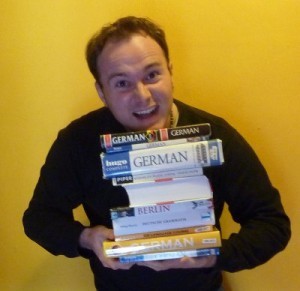
I studied German at school for five years and could barely speak a word of it in conversation. I attended Spanish classes for six months in Spain, and still struggled to even order food in Spanish.
Yet when I ditched the courses and started to learn through speaking, conversations and ordering food came naturally.
I started seeing language courses as “dusty old books” -- and I stayed as far away as I could, focusing my efforts on other approaches. Where language courses failed me, speaking succeeded.
That’s why for my entire career, I’ve never created a course. Instead, I’ve always shared strategies and techniques for learning a new language. I’ve aimed to encourage and inspire people. I want to show everyone that “yes, you CAN learn a language, too.” Anyone can speak a language - even if that means sounding like Tarzan to start with.
I believe the best way to learn a new language is to speak the language
I never dreamed I’d make a language course - in large part because I disagreed with the idea that you needed a course to learn a language, particularly as a beginner. I also believed that creating an effective beginner’s course was an almost impossible task.
It’s incredibly difficult to create a language course that works for a wide range of people. Why? Because everyone’s different. What I need to learn a new language is different to what Billy needs. And Billy’s needs are different to Stephanie’s. And so on.
On top of that, I’ve discovered that the best way to learn a language is to speak from day one. What’s the point of learning a language if it’s not about having real conversations with real people?
Real conversations are messy and human. They don’t fit neatly into a course. The things that I need to say in a conversation are completely different from the things you might need to say.
Here’s a simple example: whenever I meet someone new, one of the first things I’d want to say is “I’m Benny. I’m a blogger from Ireland.”
But the words “blogger” and often even “Ireland” are not likely to be found in many beginner courses.
My view was that language course methods have their place. They work for some people, and that’s great. But they’re only one small tool in the language learner’s toolbox.
This hasn’t changed.
But my beliefs about language courses have changed.
What happened?
Teach Yourself asked me on a date
For most of my language learning journey, I’ve not spent much time on language courses.
And when I did use them, there were only a few that I thought were reliable (and that I recommended here on the blog). One of those has always been Teach Yourself.
So when Teach Yourself approached me and suggested I partner with them for a Teach Yourself branded language course, I knew I had to think about it.
Even better, Teach Yourself wanted to combine their decades of experience publishing language courses with my unique approach to language learning. Together, we decided to create a course that would help language learners:
Speak from day one
Embrace mistakes
Focus on spoken (not written) language
Postpone most grammar
Learn only what they need
Use hacks to remember what they learn
Change their mindset to communicate confidently and effectively
Nothing like this has ever been done before, and I had the option to do it with a big name in the language learning space.

But as with any new relationship, I was cautiously optimistic...
How I Played Hard to Get with Teach Yourself
I didn’t make it easy for them. My views on learning a language are far from traditional. Speak from day one! Embrace Tarzan Speak!
And I believed that Teach Yourself was, at heart, like other traditional publishers. The brand is 75 years old, and the publisher that owns the brand is over 250 years old. They’re so old in fact that they are the same people who published Darwin’s Theory of Evolution. Seriously.
Here’s how I imagined our conversations would go:
Benny: I want the learner to speak the language right away.
Stodgy Old Publisher: Sure, we can have them repeat after the audio.
Benny: No no. I mean, the learner has to use the phrases right away. Like, in a conversation with another person.
Stodgy Old Publisher: … … … *blank stare*
But when I met with Teach Yourself, here’s how it actually went:
Benny: I mean, the learner has to use the phrases right away. Like, in a conversation with another person.
Teach Yourself: … We can do that. We could even partner with a service like italki to help learners find people to have conversations with in their new language.
Benny: … … … *blank stare*
Here’s the great thing about teaming up with an established brand like Teach Yourself: they have the resources to bring all of my mad-scientist ideas to life.
Teach Yourself broke all the stereotypes I believed were true for traditional publishers.
They even listened when I explained that I wanted the freedom to tell learners that it's OK to say things WRONG.
Here’s how I imagined that conversation might go:
Benny: You know, in real life, French people say “Je sais pas”, not “Je ne sais pas”, so we should teach that.
Stodgy Old Publisher: … but “je ne sais pas” is the grammatically correct form.
Benny: Right, I know, but that’s not how people actually speak.
Stodgy Old Publisher: … but “je ne sais pas” is the grammatically correct form.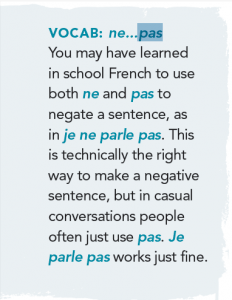
But Teach Yourself got it. While many publishers might balk at the thought of encouraging learners to say things that aren’t grammatically perfect, they worked with me, and helped me create a course that places the highest priority on giving students practical, relevant, and extremely useful phrases.
They were even on board with me telling readers what vocab to avoid learning right away, because it’s just not that useful. Language hacking and time wasting just do not go together.

Our partnership worked out so well, we eventually decided to create four Teach Yourself Language Hacking courses (to start). These are:

Finally, a language course that's flexible enough for anyone
There are a hundred reasons why the Language Hacking courses are (ACTUALLY) different from anything that’s been created before. But probably my favourite is that the courses are designed so that...
You can choose your own adventure.
Throughout the course you have opportunities to find and use the language that's specific for you. You can personalise it to suit your situation, and go beyond the usual stock answers like “I’m single” or “I’m married.” Most people’s lives aren’t so cut and dry. You might want to say, “It’s complicated”, or “I met my partner online”, or “I’m a disaster in relationships!” instead. Language Hacking prepares you for these real-life conversations.
The same way you may have read through those “choose your own adventure” books when you were a kid, excited each time to read it again and create a totally different story -- that’s how we built the Language Hacking courses. You can revisit the course again and again, and each time you go through it, you’ll learn new phrases that prepare you for different life experiences that you choose for yourself.
You can complete the course ten different times and learn ten different sets of vocabulary, depending on what your goals are for that adventure. Because who knows where your language journey may take you or what you may need to say. These are not your typical language courses. You can never really “complete” the course, because you can always revisit it to build on your vocabulary in ways that are completely you-specific.

So here’s how these courses have changed what it means to be a language hacker
Language hacking has always been about learning powerful strategies and techniques to learn new languages faster on your own at home.
I didn’t want to - I couldn’t - make just another course that teaches you standard, one-size-fits-all phrases.
I wanted to create a new kind of course that teaches you how to use what you learn to continuously build new phrases on your own.
It’s language hacking in practice. Language Hacking courses equip you with useful, versatile, relevant phrases you will absolutely need to know. They arm you with the strategies to learn on your own what no course can teach: the vocabulary and phrases that YOU need in YOUR conversations. This way, you’re learning only what you definitely need to know, and not wasting your time studying the endless possibilities of what you “might” need to know.
And I worked with Teach Yourself to create these courses. What could be more fitting?
… perhaps that we’ve also collaborated with italki to make sure you’re using the language, actually speaking it with real people, right from Unit 1.
… and that I’ve created audio-based flashcards through Anki to accompany the course. And I’m giving them to you for free.
Why would I do such a thing? Because I don’t want my course to stop living after you’ve closed the book. And since someone else will probably do it anyway, I want to make sure what’s out there is really good quality. So I’m making it myself with the help of an FI3M team member who’s a huge Anki nerd (Hi, Joseph!)
I set out with Teach Yourself to create a new series of language courses that would get learners actually speaking a new language, quickly, with real people.
And you know what? I’m proud to say that we nailed it.

How to get your Teach Yourself Language Hacking course
Click here to pre-order your Teach Yourself Language Hacking course now.
Be sure to save your email receipt - my team and I have put together an incredible bundle of bonuses for everyone who pre-orders.

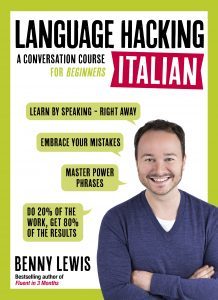
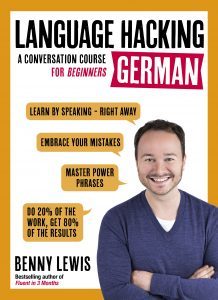
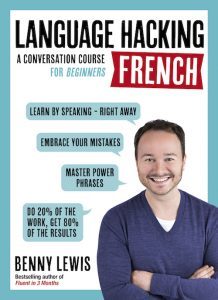
(If you’re still not sure that Teach Yourself Language Hacking is right for you, click here, select your language, and enter your email to receive the first chapter of your chosen course, free.)
The post How I turned my guerilla-style language-learning method into a course you’ll find in bookshops around the world appeared first on Fluent in 3 months - Language Hacking and Travel Tips.




August 5, 2016
Learn a Language Faster: 8 Simple Language Hacks

I was taking the official listening exam in Chinese proficiency, and I could not understand a single word of the recording.
The test was "elementary" level, and I was there, handing the paper to the teacher at the entrance to the classroom, confused. I had studied by myself at home for years, and I had lived for nine months of "full immersion" in my new country. I’d also attended Chinese classes for three hours per week. How could I perform so badly?
When I received by mail the "Not-Passed Diploma", my confusion turned into frustration. Who was to be blamed for my failure? I had really spent a lot of time studying seriously, religiously, with friends, books, music, movies, and language exchange. Was it me? Was it the teaching system of the school? What was wrong?
It was not my first language learning experience. By the time I began learning Chinese, I was fluent in two languages besides my mother tongue and had studied other languages at a basic level. But this time, I entered into the adventure of an exotic language from a remote place, and I failed.
After some time, things got better, but it was a long and winding road with many obstacles. During the following years, I discovered some secrets about language learning. Certainly, these are not ideas I invented, and most of them have been well-known to many expert learners. But for me they were a discovery, and, in one way or another, made a big change in my perspective of my learning process.
Here’s what I learned...
1. Avoid Shifting Gears Between Languages
A drop of water falling on an uneven surface will follow the direction of the steepest slope. The brain does the same with languages.
In the presence of two messages in two different languages, the brain focuses on the easiest one, often blocking or ignoring the second one.
The brain seems to work at different speeds with different languages. Changing from one language to another implies changing speed, like shifting the gear in a car.
The moment I open a textbook and begin to study, my brain changes gear, which takes a small amount of effort. If for a moment I get distracted by a written text or an audio message in my mother tongue, my brain will shift gear again - no effort needed. In other words, it is easier to “shift gears” from a more difficult language to an easier one than the opposite.
Here’s the simple lesson I learned: while learning languages, don't get distracted by anything in a language different to the one you are learning. This is more difficult at a beginner’s level, because you might need an explanation in a language you can understand, or you might need to check the dictionary. But I always try to create, as much as possible, an environment without distractions in other languages.
Try it for yourself. Which language are you learning? French? Find a free day in your schedule. Try (as much as possible) not to read, listen or even say anything in a language other than French. From early in the morning (or even from the previous night) listen only to music in French, read the news (even if you understand just a bit) in that tongue, and make the effort to think, with simple phrases, in French.
If you want, you can be more radical with this. Remove all material from your desk that is not in French, and set your computer and your phone to French, so when you sit down to study, there are no "slopes" that will change the gears of your brain to non-learning mode, even if it is just for some seconds. Try this, even for half a day, and you will notice the difference.
2. Plan Exhaustion Into Your Study Goals
We’ve all had the experience of making a clear and decisive resolution: I will exercise twice a week, I will not lose my temper at the office, I will study Japanese every day. After a beginning full of energy and determination, our motivation fades out and we find ourselves in the same situation: no exercise, losing our temper and not studying Japanese.
The problem might be bad planning, unrealistic goals or lack of motivation. But there is another aspect we can take into consideration: often we make plans and take decisions for the times in which we will have a lot of energy. Why not plan instead for those moments in which we will be exhausted?
It is good to ask yourself: how do I rest? Walking in the forest? Reading novels? Listening to music? Watching sports? Doing handicrafts? Painting?
Take your preferred way of relaxing, and add an element of your target language.
Like walking in the park? What about listening a language podcast while you walk?
Enjoy reading novels? Look for a book adapted to your level.
Love listening to music? Have you tried learning a song in your target language?
Is watching sports your thing? Then watch the same sports matches you usually would, but listen to commentary in your target language. If this isn’t possible, then look for sports you can watch with commentary in your target language.
Is your favourite “hobby” spending time with friends? Then make a new friend interested in learning the same language as you. Learn together.
Still stuck for ideas? Then listen to the radio, music or news while doing other things, even if you only understand ten percent of the content.
At the beginning, these new ways of relaxing will feel unfamiliar - perhaps even difficult. You will need time to adapt, but after a while it will be as effortless as the way you used to rest before. And most importantly, your brain will work by itself without you noticing, and will store information that it will bring up again when needed.
You might ask: isn’t it more effective to study with intensity, order and attention? This question is a trap. I am not saying that you should only study in ways that allow you to rest, but there are many moments in which this is the only way you can study. Make the most of your rest time!
3. Before You Take Your First Step, Decide Where You Want to Go
What is my "level" in my mother tongue? Most probably I would say that it’s at least "advanced", or "native". But that is hardly a real description. Am I able to write a contract in precise legal terms? Do I understand the slang of my language from different countries or cities, or even age groups? Am I able to explain the intricacies of grammar to a foreigner? Each one of these abilities could be a goal to attain in my own language.
In the same way, each time I decide that I will start (or continue) learning a language, besides finding a reason to learn the language, I need to set clear goals. Not only dreams, but clear specific goals, including the time and resources I am willing to spend on learning a new language.
For example, it might be that I am learning Russian because I enjoy studying "something", and it happened that I found a Russian textbook at home. In this case my objective is to enjoy the act of studying. It is a valid objective and studying Russian is just a means to attain that goal.
Perhaps I sing in a choir that sometimes performs songs with French, Italian and Latin lyrics. I would like to understand a bit of these three languages to make the singing more meaningful. In that case what I need is good pronunciation, together with some basic ideas about grammar and vocabulary.
We can imagine a more demanding situation: I want to apply for a scholarship that requires a certain level in Japanese, or my boss just told me that in order to get promoted I need to be fluent (whatever that means) in Finnish.
It is then necessary to set clear goals. Here are some examples of goals:
Within one month acquire vocabulary concerning seafood products.
By 10th August be able to read in a loud voice fluently, without stammering, and clearly, even if I don't understand what I read.
At the end of the year understand what the evening news is about in my target language.
In three weeks decide what kind of materials I need to begin learning a language.
Pass the intermediate level test in Quenya as a Foreign Language in February.
Survive my trip to Inner Mongolia.
Teach a university course in French next September.
Some people explain goal setting in terms of motivation - to stay motivated, you need a goal. That’s true, but it’s also about putting in place habits that mean you’re likely to achieve your goal. This could be attending Chinese class on Tuesdays from 1-2 p.m. Or it might be reading for five minutes in the morning, listening to music while jogging on Thursday afternoons, or watching a video course on Saturdays at 8 a.m.
It’s important to connect your big goals with concrete activities that you can do at very precise moments of your schedule. If you do this, you’ll reach your goals.
4. Create Your Own Learning Activities
For some strange reason still unknown to me, at the language schools I’ve come across they always want to teach many different things, but very rarely do they want to teach you how to learn.
In a restaurant this approach would make sense; we go to a restaurant to eat, not to learn to cook. In language learning, it does not make sense. From my experience of many failures (which led to later successes), one of the most useful things you can do is develop personal learning activities. This is especially necessary when you get beyond the basic level in a new language.
Creating personal learning activities means you examine yourself and your progress (instead of the school examining you), and find direction in your study that’s relevant to you and your goals.
How can you examine yourself? On a regular basis, ask yourself:
What is my weak point now?
Which area do I want to strengthen now?
In which field do I need to acquire vocabulary?
Where do I commit more mistakes?
What am I afraid of?
Then create a simple learning activity to address the issues you discover. Not sure where to start with this? Just create something. Try. Fail. Work. Adjust. Change. Practise. Examine. Fail. Try again.
Some of the things I've tried (some of which work only in a full immersion situation) include:
Going to a shopping centre and trying to buy 101 different things, even if at the end I didn't buy anything. (Don't make the vendors waste much time.)
Listening to music while reading the lyrics and singing aloud. Then singing without reading the lyrics.
Creating a database of phrases and vocabulary from a novel, and reviewing the list using a free flashcards app.
Reading an article every day in my target language, and talking about it at lunch with friends or colleagues. This worked much better when they didn't know I was doing it as a language learning activity.
Keeping a diary in my target language. One or two phrases a day.
I didn’t choose these activities randomly or because they came to my mind. I chose them knowing that, at that moment in time, I needed to improve my vocabulary or listening skills, or reach some other concrete goal. I also chose them because they work for me. They deliver the results I want.
These activities work best when you persist at them. In my experience, they don’t seem very useful to start with. But after few weeks I really begin to notice the effects.
What do I do when I need ideas for creating or improving these personal learning activities? I draw inspiration from other learners, by reading blogs and websites.
5. Love Mistakes and Laugh at Yourself
I was supposed to teach at the university. I had to pretend that I was able to teach an entire semester in the language in which I had failed so many times. I knew my pronunciation was just terrible and I had not mastered the vocabulary.
So, I found myself in front of a classroom with almost one hundred students who were surprised to see that their new teacher was a foreigner hiding under a local name. I was so nervous that I had diarrhea that day, but that is another story. I tried to calm myself and began to speak. I greeted the students and thanked them for joining my class, but after some seconds a question came to my mind: "What are you doing here? This is ridiculous." Suddenly I got nervous again, blushed and started to sweat profusely.
I survived the semester without using a single word in English (or any other language besides Chinese). Every week I had to give birth to a new lecture. It was both a very tiring and enriching experience.
Did I perform well? Of course not. One year after the end of the semester I had dinner with one of the students, who is now a very good friend. He told me, laughing, that he didn't understand much of what I had said during class the year before. I loved that! It was another fantastic failure diploma, and coming from a friend it was a real treasure.
I enjoy my classes. I don't know if the students always do, but I do. One of the things I like is that we laugh at my mistakes. Often I mispronounce words, I forget terms, or forget the right stroke of a Chinese character. Sometimes my students cannot understand my questions, or I cannot understand their answers to my questions. Often they just smile, sometimes they laugh, they imitate my tones, they try to correct me on the spot. There is only one way to survive, and that is to learn how to enjoy failure. This has many advantages. First, we laugh, and it is good to laugh. Second, because I visibly enjoy failure, my students are not ashamed to correct me. Third, I no longer feel afraid of making mistakes.
There is a moment in which it’s particularly useful to laugh at yourself: on really bad days. We are not machines, we are not computers. In theory, once an app is installed on a phone it will work in spite of the weather and the day of the week. Human beings are not like that. It might happen that, for unknown reasons your Spanish is less fluent on Mondays. Don't get frustrated. Smile!
Even if you make hundreds of embarrassing mistakes in one day, your friends are still your friends.
6. Love Silence
Love silence, speak less. I know this sounds like poor advice. And I profoundly believe in the standard methods of language learning: listen more, speak more, read more, write more. Yes, and at the same time: love silence, and speak less.
Love silence. After each failure (grammatical mistake, wrong pronunciation), big or small, don't ignore it so as not to lose motivation. Instead, stop, in silence, and ask yourself: what went wrong? What can I learn from this? Even better, write down your mistakes. Which important word were you not able to say?
Loving silence, interior silence, enables you to be a better listener. I have seen trillions of learners who attain an intermediate level but don't progress any further. Even if they are often corrected by others, they don't notice it because they are too busy listening to themselves.
Loving silence also enables you to think a microsecond before speaking. For some language learners who love talking, it is difficult to turn long, rich, complex phrases in their mother tongue as they appear in their brains, into the simple, poor, ugly phrases in the language they are learning, but it is necessary to pass through that step.
I might want to say "Whether 'tis nobler in the mind to suffer the slings and arrows of outrageous fortune, Or to take arms against a sea of troubles, and by opposing end them." But if I want to translate that into the language I am just learning, I will fail. I need to learn to stop a bit, and turn that into something much simpler, like this: "I am tired. Should I sleep or work?"
7. Don't Forget Memorisation
Memorisation has bad press. We have heard many times that good education, including language learning, is about understanding, creativity, practising, or many other things, but it’s certainly not about memorisation, as it was in the past, in the dark, oppressive, terrible past.
Memorisation is the ugly duckling of learning. It’s boring, takes so much time, and so often is useless. These characterizations are partly true, but I would still say "train your memory". Then you might discover that memory is a fantastic realm to be explored.
One of the best ways to train your memory is through image association. This technique has been used for millennia and is about far more than simply improving your memory. I would go as far as to say that it’s a way of living, of seeing reality, of "reading" the world around us.
Image association not only helps you memorise and recall isolated facts. It helps you develop various habits of the senses and the imagination that reshape your brain.
After you’ve entered into this realm of memory training, you’ll find that the way you learn is completely different and far more effective. You’ll also have little patience for phrases such as "I have bad memory".
Because these techniques are about a new way of seeing the world, they take time to learn, and cannot be applied immediately. The time you invest will be repaid with a high interest rate.
8. Master the Art of Language Exchange
"We are here in front of a cup of coffee for the first time, ready to help each other to learn a language. Now what?" This is a common scenario in the first session of a language exchange.
How do you get past this awkward stage?
After finding a language exchange partner, one of the first things I do is to establish a common goal. If we don't have a common vision, the language exchange will hardly work.
In my case, language exchange partners come from two sources: friends-of-friends and websites. When you find people on websites, check out their profile to see why they want to learn a language. A person might write that he or she is interested in meeting new people, romance, or cultural experience. I avoid people who want these things. Instead, I search for people who want to learn a language, because that’s my focus. Also, I never contact anyone who wants to learn ten languages, because most probably they lack real motivation, and might not persevere.
For reasons unknown to me, for the first session of face-to-face language exchanges, almost all my exchange partners choose a place more expensive than what their budget would allow for a habitual meeting. I almost always begin with: "let's go to a cheaper place."
After we order a cup of coffee or dinner, I introduce myself and explicitly say that my focus is to learn a language. I let my exchange partner know that I have strong motivation, and that I have some experience teaching and learning. I also explain what I expect from them ("Don't worry if you don't have experience", "It's ok if you aren’t a grammar superhero", "If after some weeks you don't want to continue, just say it", etc.). Finally, I outline the rules of the game (one hour for your language, one hour for my language, frequency and time, etc.).
I have been doing language exchanges for years. Other people might have different experiences, but in my case they evolve in one of two directions:
After a few meetings we both realise that we are not going anywhere and the exchange naturally dies.
We meet for a long time, end up being friends, and after a while we don't care much about language.
In almost all cases, I need the exchange more than my partner does, so it is up to me to arrange the meetings and to prepare the material for both languages. Often I go to their place, spending more time travelling. If we’re short of time, I sacrifice my learning time. And all that is fine. It is normal that I, being the one who needs it more, should add fuel to the engine to keep it working. I should not expect my learning partner to have the same amount of interest and make the same effort; it's part of the game. In almost all cases, sooner or later my learning partner gets influenced by my enthusiasm and becomes more active, making the entire experience rich and pleasant (In my current exchange it is the opposite, he is more hardworking and says that I always arrive late).
I’d also say that an effective language exchange session requires a clear direction. The direction might be given by a textbook or a selection of topics, or a clear goal, such as preparing for a test. I try never to arrive to a session without knowing what we will do that day. With a private teacher, it is not so different. Unless I’m still at a basic level, I don't allow a private teacher to take the reins of the class. I always let my teacher know what I want, and what I need.
Learning is my objective and I need the help of others. I can use many means to learn such as books, recordings, and language apps. But I don't use people. Even if it might mean going slower or losing some good opportunities, I try to create situations in which both my exchange partner and I receive something. At the same time, sometimes I allow myself to be used. I have my goals, others have theirs.
Language exchange is something very personal and what works for some might not work for all, but one of the key components of a fruitful exchange is laughing lots and having fun. Show gratitude when you receive help from others.
What are Your Top Language Tips?
As I write these paragraphs, I’ve just moved to a new country. I want to be fluent in three months in the local language, but everything seems to be against this goal: I live surrounded by English, I don't have much time, and the language seems to be more difficult to me than Mandarin was when I began with it. Strictly speaking I don't need it as much as I needed Chinese few years ago. Will my "eight secrets" work? Any advice?
The post Learn a Language Faster: 8 Simple Language Hacks appeared first on Fluent in 3 months - Language Hacking and Travel Tips.




July 28, 2016
How to Live in Europe for More than 90 Days
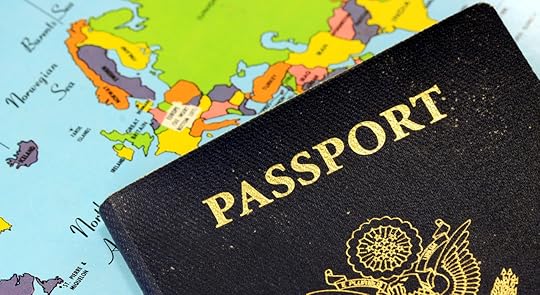
While I’m writing this in May, we’re entering the best time of year in Europe. Summer is beautiful, the outdoor cafes are bustling, and it’s hard to imagine wanting to be anywhere else.
As you may already know, Americans (and many other nationalities) don’t need a visa to visit most of Europe. In fact, you only need a preapproved visa if your country is on this list.
The catch? You can only stay for 90 days in any six month period.
What if you want to spend more than 90 days in Europe? Maybe you want to learn a language, have a deeper experience living in a European capital, or spend more time with new European friends.
It turns out that despite the 90-day restriction there are a few ways to stay much longer. I've spent nearly two continuous years in Europe now, mainly in Budapest, and I hope to stay longer.
Let me explain how you might be able to do the same.
My Stay in Europe: It Started When I Quit My Job
My story goes something like this: in July 2011 I quit my job and started traveling around the world. First to Central and South America, then Europe, and eventually South East Asia.
It didn’t take me long to discover that I could work online and continue to fund my travel addiction. While I still love to travel, over time I found myself staying longer and longer in each place I visited. When I ultimately settled on Europe as a base of operations (for both business and personal reasons) I needed to figure out how to stay past the Schengen restrictions. Unfortunately I had absolutely no idea how to go about it.
It turned out to be much easier than I expected, and I’d like to share how I've managed to stay in Europe for the last two years. It all started with a language-focused residency permit in Hungary. I’ll get to that in a moment.
First, I should point out that this narrative focuses on me - an American - living abroad. But what I learned can apply to citizens of many other countries too.
How the Schengen Zone in Europe Works
Let's get right down to business. The first question most people ask is ‘how do I get a visa for travel to Europe?’
First of all, if your home country isn’t on this country list, then you don’t need a visa. Countries that don’t need a visa include Australia, Canada, New Zealand, and the United States. Instead of a visa, you just get a stamp in your passport on arrival. This stamp gives you three months’ access to what's called the 'Schengen Zone', which includes most of the EU, and a few non-EU countries.
The Schengen Zone is a large block of territory that looks like this:
[caption id="attachment_19033" align="aligncenter" width="2000"]
 The blue area is the current Schengen Zone. Source: Wikipedia.[/caption]
The blue area is the current Schengen Zone. Source: Wikipedia.[/caption]If you want to stay more than three months in the Schengen Zone you'll need a 'residency permit', which must be formally applied for.
There are a few technical details to understand about Schengen:
As the map above illustrates, there are some important country exceptions, notably the UK and Ireland. States that are set to join but are not officially part of Schengen include Romania, Bulgaria, Croatia, and Cyprus (these are orange on the map above).
You can stay in the Schengen Zone for up to 90 days in any 180 day period. That means you can go in and out of the area over a period of 6 months, as long as the total time inside does not exceed 90 days. (Alternatively, you can just stay in the Schengen Area for 90 consecutive days, then leave.) This also means that you could spend a total of 6 months in the Schengen Zone each year as long as you spaced it out properly.
You don’t need to show your passport inside the Schengen zone - there are no border checks between places like Spain and France, for example, which is convenient but a bummer for those who like to collect passport stamps.
Leaving the Schengen zone can be as simple as hopping on a bus or train to Croatia from Hungary (which is five to ten hours away, depending how you travel). You get a stamp on the way out. When you come back in you get another stamp. While this may sound suspiciously like a ‘visa run’, there's legally no such thing in Europe. You add up your total time in the Schengen Zone, and when it hits 90 days in six months you’re done.
Can you get in trouble for violating Schengen rules? Yes, absolutely.
If you’re thinking about violating the rules, such as by overstaying your Schengen visa, a quick search for “Schengen penalty” will bring up stories of travelers who were deported and/or fined heavily for doing so. It's best to whenever possible play by the rules. I for one am not eager to get a large 'DEPORTED' stamp anywhere in my passport.
So in sum: you can visit Europe for up to three months without doing any additional paperwork. If you want to stay longer, you’ll need to look at residency permits.
How I Stayed in Hungary for 12 Months with a Language-Related Residency Permit
Residency permits are a simple concept. The only issue is finding the right one to apply for. There are a few options:
Student Visas
Type D Temporary Residence Permits
Investment/Business Visas
Some very specific case visas, like work holiday or artist visas.
How I Stayed in Hungary for 12 Months with a Language-Related Residency Permit
If you are involved in something like a semester-exchange program or a full-time language-learning course you probably have the option of obtaining a student visa in the country of study. Most likely you’ll have to enroll and pay for the course before you apply for the visa, and you probably have to do this before you leave home. It’s also likely the organisation running the course or exchange can help you set this up.
The only problem with this option is the visa usually only lasts as long as the course and it may have other requirements like minimum course hours per week. This may be the case if you’re in an official university program, but obviously does not work for a lot of us who are either more self-directed or outside of the university system. Language courses like this can also cost a lot of money.
Enter the Type D “Other” Visa for Longer Stays in Europe
The primary permit for our purposes is a Type D "Other" visa, which is available in most countries in Europe that I’ve looked at.
Type D visas are for anything that doesn’t fit into the other buckets above. They’re for people who are going to be living for a year or two in a country but not working or studying there. They seem to be designed for people on sabbatical, retirees, writers/artists, or anyone else who doesn’t fit into the above categories.
Some example reasons for Type D Visas include:
Taking a language course (either part time or on your own, as opposed to an official course as mentioned above).
Looking for business partners and opportunities.
Exploring your roots. If you have Hungarian ancestry, for example, it’s fairly easy to qualify for this in Hungary.
Research.
With a Type D visa, obtaining a residency permit is not that hard, but it's not a cakewalk either.
The Catch with Type D Visas: Minimum Savings and Other Requirements
There is a major catch to the Type D visa: you have to prove that you have enough money to survive while you’re in the country.
How much are we talking about? Probably on the order of about €1,200 to €2,000 per month, so if you’re planning to stay for a year you’ll need €15,600 - €24,000 in your bank account.
Plus, you must show proof of housing in the form of a signed lease. Because of this requirement, this visa option is only a good one for people who are really committed to staying for a while. That said, you can always break a lease later if it comes to that.
As another caveat, some countries, like Spain and Portugal, require you to apply for the permit from your home country. That’s not ideal if you are already in Europe. This isn’t always the case, and isn’t the case in Hungary, but it pays to plan ahead.
If you don’t qualify for the Type D visa due to the savings criteria, don’t fret, you can still look into the student visa option.
For those who do, here are some additional details about what applying looks like.
A Basic Step-by-Step Template for Applying for a Type D Visa in Europe
Step 1: Pick a Country and Check Out Their Visa Requirements
First of all, find out the specifics of the country you’re staying in (or the country you plan to visit).
It’s best to find the website of the country’s immigration authority. If you can’t (yet) read the local language, use Google Translate or contact the local consulate in your home country to check out the visa application requirements.
When you start searching for ‘residency permit in [country name]’ you’ll probably find plenty of expat companies offering services and information. Sometimes these can be extremely helpful so it may be worth giving one a call to learn more.
Step 2: Complete the Relevant Paperwork
Make friends, hire a local, or hire an expat company to put all the visa paperwork together for you.
The nice part about working with a local or someone who has done this before is they will tell you what you need to do and where/when you need to show up. That said, you can also do the entire process yourself but it can be difficult unless you can read and speak the local language. This may be another reason to apply from your home country.
Step 3: Assemble the Supporting Documents You Require
The documents you’ll need in your application depend on the country where you’re applying for a visa. The following are based on my experience in Hungary:
A letter of intent, explaining why you want to apply for a permit. Generally this is a) exploring roots (any relatives or connections to the country); b) a language course (that's what I did); or c) exploring business opportunities.
Bank account statements showing you have enough money to live for the time period you want to stay in the country.
A copy of your apartment lease. This can be the hardest part. You need to actually prove you have the intent to stay in the country in the form of a signed rental lease. The longer the better. Some people I know have been granted two year residency permits with a two year lease.
A copy of the Title Deed for your apartment. This can be a bit of a pain, but there is often a requirement to prove the person on the lease actually owns the apartment. The owner can probably get this for you.
A local insurance certificate. For Hungary, this meant extremely cheap insurance from a common provider like Generali that covered sending my remains home if the worst happened.
A scan of your current Passport.
Some passport photos. Check the requirements with your destination country’s consulate. The required dimensions for passport photos can differ from one country to the next.
Copies of any other application documents.
In other countries, you’ll need a background check. Some countries such as Portugal require Americans to produce a Criminal Record Certificate issued by the FBI. This can be requested in Portugal but is probably much faster in the US.
Step 4: Visit the Immigration Office
Once you have all the required documents, visit the immigration office with a local friend or representative from an expat company. Call ahead first to see if you need to make an appointment. Take a book, this will take a while! Of course, also take all the documents you assembled with you.
Step 5: Deliver Any Documents You Forgot
Up to four weeks later the immigration office will send you a letter about X document you forgot to include in your application. This letter will be 'deliver in person' only so if you aren't at your address it goes to the local post office and you have to show an ID to get it. In other words, you can't skip town, or if you do you have to come back to take care of this.
You submit X document by emailing it to your expat agency or mailing it yourself.
Step 6: Resume waiting
In the meantime, you’ll likely be asked to repeat steps 4 and 5 once or twice.
Step 7: Celebrate!
Once your application has been accepted a date will be set for you to personally go into the immigration office to get your residency card. Sometimes if you are lucky they will mail it to you.
The Costs Involved in Applying for a Type D Residency Permit
An expat company can cost as much as €500 to help you submit an application, so hiring a local or making friends is significantly cheaper. Doing it yourself depends on if you’re doing it from your home country or abroad, how much of the local language you know, and how much your time is worth.
Other costs to consider include:
Insurance (required) at around €100 for a year. This only covers sending your remains home if something happens.
A Title Deed to apartment can cost €15 or so.
The application fee - around €30, though this varies by country.
How Long Does it Take to Get a Residency Permit?
In my experience, it takes two to three months.
Make sure you start the application as long as possible before your Schengen stamp expires (minimum 30 days, preferably 60). It's best to get started right when you arrive.
It’s useful to understand the underlying political disposition in the country where you’re applying. For example, in an ex-Soviet-bloc country, cutting through the bureaucracy is about who you know. In Spain they will probably put things off until tomorrow.
Are There Any Downsides to the Process?
If you have the time and energy, the only downside might be a small investment in the application process. But to be clear, it isn’t necessarily for the faint-hearted either. The main pain points here being:
It can take a while to complete.
You need to show minimum savings amounts.
The process isn’t the cheapest thing ever, although probably cheaper than an official language course.
You need to be committed to want to stay in Europe. 90 days is plenty of time if you just want to bounce around.
You have to reapply every year.
Overall, not that bad, but expect it to take some time to complete.
The End Result: Living in Europe for One Year (or more)
Spending a year or two in Europe makes for a much deeper experience, both for language learning and for forming a lasting connection to a culture.
The nice part about having an official residency visa in Europe is that it gives you an all-access pass to the Schengen zone, which means you can also visit the rest of the continent while you’re there.
While I wish it was easier for Americans (and others) to get a visa to live in Europe, it’s relatively straightforward to complete the steps above. So whether you apply for a student visa or a residency permit, don’t be afraid to jump in with both feet and stay awhile!
The post How to Live in Europe for More than 90 Days appeared first on Fluent in 3 months - Language Hacking and Travel Tips.




July 22, 2016
10 Simple Games and Exercises to Practise Your Vietnamese Skills

The show’s name is “Funny English Class”, or “Lợp Tiếng Anh Vui Vẻ". It’s show aimed at children ages 4-8. Since accepting the gig, I’ve realised that teaching kids while being on screen is one of the hardest things I’ve ever done in my life.
All we do is sing songs and play games. But the kids love it, and they also learn a ton.
It made me wonder…
Why can’t adults do the same?
See, language learning can be as boring or as fun as you want it to be. So, might as well make it fun right!?
Adults don't play games as often as we should (myself included!). Games are fun. They're helpful and we can learn from them too. What if we played more games in order to improve our language skills?
Add to that the fact that adults are better language learners than kids, and we can use games to make some hefty progress our target language!
If you’re learning Vietnamese, the list below will help you enormously at improving your Vietnamese skills. If you’re learning something else, use these as suggestions to get creative with your target language!
1. Play the Family Tree Game

In Vietnamese, you must address the person you are talking to according to their age, gender, and relationship to you. This is the main reason Vietnamese people are quick to ask you how old you are. It’s not because they’re being rude and in your face, it’s because they want to know the most polite way to address you.
When talking to an equal, you use bạn which means friend. When talking to an older man, you call him Anh (older brother) or Chú (uncle). Then, rather than saying “I” or “me”, you’d have to refer to yourself as the corresponding pronoun for the situation. If you call them uncle, then you refer to yourself as con (child). If you call them older brother, you refer to yourself as em (younger brother).
Basically, the words for you/me change a lot, and it’s not easy. But, one great exercise to learn all these words is to use your actual family members as a reference.
Make a family tree for yourself and include pictures of real people if you can. Pairing the words with real people in your life will help you to learn and remember the words faster. Once you’ve done this with your family members, make up sample dialogues with each of them and write down the pronoun you would use for “me” and “you”.
When you’ve mastered this, challenge yourself again by repeating the exercise from the perspective of someone else.
2. Move Your Body With the Tones
Ready to get moving?
As you probably already know, the Vietnamese language has six tones. If you’ve never learned a tonal language before, it’s going to take some time to familiarise yourself with these. A great way to have fun while learning them is to use your body. Match each tone with the following body gesture:
Sắc: Rise up onto your tippy toes.
Huyền: For the falling tone, take your right hand and slash down and diagonally across your body like you’re throwing a frisbee.
Hỏi: Shrug your shoulders as this tone drops down and comes up.
Ngã: Drop your chin down and then slowly bring it up.
Nặng: Punch the air in front of you with your left hand like you’re the director of a 50 piece orchestra.
Ngang: For the flat tone, open your eyes wide but don’t move any other part of your body!
“Are you serious? This is ridiculous!”
You bet I am! I told you we were going to have fun, didn’t I?!
Next, have a teacher or friend read flashcards out loud. For each word, do the action with the corresponding tone, and then repeat the word, and then repeat the tone. Using your body in a fun way will make it easier to remember. For example, if the word is biết, (to know), then you would rise up on your tippy toes because it has the rising tone, sắc.
Don’t have anyone to learn with? No problem, just do the move as you are going through flashcards. It’ll save you some embarrassment, but you’ll still enjoy it!
3. Circle the Tone or Accent
Unlike Thai, Cambodian, and Lao, Vietnamese has a Romanised alphabet. Great news, right? You don’t have to learn any new letters at all? Not quite...
Yes, the alphabet is very similar to English, but it still has many differences. For example, there are two letters that look like D (D and Đ) and they sound NOTHING alike. There are also three letters that look like A (A and Ă), but all are pronounced differently.
Before you get too confused, make sure you learn the alphabet, especially the vowels. You’ll notice that it’s hard to at first.
A great way to practice this is to play a game called “circle the tone”. Take any piece of Vietnamese text and go through and….you guessed it! Circle the tone!
Then go back with a different coloured pen and play, “circle that accent!”
Here’s a tip: Every word in Vietnamese has only one tone, and the tone can also NEVER touch a letter. Use the following graphic of the alphabet to know if you circled an accent or a tone!
4. Sing Your Heart Out, Vietnamese Style!

Karaoke is a big part of Asian culture, and Vietnam does not fall short of that stereotype. What better way to practise pronunciation than singing along to some Vietnamese tunes?
If you don’t happen to live in Vietnam and can’t make it to Thursday night karaoke with your friends, don’t worry...you can order karaoke to your computer for free via YouTube.
Vietnamese people LOVE karaoke, so there are plenty of playlists on YouTube for you to try. Here’s one option and here’s another. Just promise not to wake the neighbours up!
Practise singing as much as you can, and feel free to dance while you’re at it. You may not realise it, but you’ll be exposing yourself to new words while also training the muscles in your mouth, enhancing your pronunciation.
For overachievers: Once you’ve sung the song a few times, write out the lyrics on a separate piece of paper. Translate as much as you can, and ask your teacher (if you have one) or a native speaker to translate the rest.
You may not become a famous singer, but you’ll definitely improve your speaking skills, learn some new vocabulary, and have fun some while you’re at it. Bonus points if you upload a video to YouTube!
5. Identify That Cognate
Though Vietnamese doesn’t have much in common with most Romance languages, it does have many borrowed words from English, French, and Chinese.
Try to guess the following English words given the Vietnamese spelling and pronunciation (answers at the bottom of this post).
If you have access to a teacher or a native speaker, have them read the list out loud to you and try to guess the words. You’ll both have sore abs from laughter by the end!
in tơ nét
tôi lét
phây búc
ta xi
cu te
wifi
pát quột
xi nách
láp tóp
ma lai xi a
đo la
me niu
ghi ta
trống
cam pu chia
ra đi ô
u ét bê
6. Learn Vietnamese With Annie...Then Be The Teacher!

Learn Vietnamese With Annie is a brilliant YouTube channel.
Annie has videos about everything: tones, grammar, pronouns, vocabulary, and more. Plus, she does both the Northern and Southern Vietnamese accent.
The best way to learn something is by teaching it. Take notes while watching her videos. After each video is done, pretend that YOU’RE the teacher and you’re teaching it to someone else. Rewrite the content, do a little lesson planning, and then pretend like you are teaching someone. If you have a study buddy or a teacher, then teach them! If not, pretend you’re making your own tutorials!
If you’re looking for faster-paced videos of a foreigner teaching Vietnamese, check out this helpful playlist.
7. Play “I SPY” in Vietnamese
Waiting in line at the grocery store? On the bus home back from work? Simply look at the world around you and think about what you can see in Vietnamese. The bus? Xe buýt. The clouds? Mây! A hat? Mũ. Simply name as many items in sight as you can.
Then, for better practice, turn those into detail descriptions. A big blue bus: xe buýt tô và mấu xanh biển.
Make complete sentences if you can! A man buying some bread: Đan ông đang mua một cái bánh mì.
This is an easy exercise you can do whenever you want, and it trains your brain to think in Vietnamese. A double win!
8. Turn the Vietnamese Word of the Day into a Sentence
At Fluent in 3 Months we love Innovative Language podcasts, and their has heaps of activities and exercises. If you’re on a tight budget, they’ve got a daily email that sends you one new word a day. It’s amazing.
This is a great way to maintain progress no matter how busy you get. Instead of just reading the email, take each word and make a new sentence out of it. Jot down the sentence on a piece of paper. It doesn’t seem like much, but after a month, you’ll have 30 sentences to review!
Another great exercise is to take ten minutes every Friday (the day is arbitrary, just make sure you do it once a week) and try to write down all of the words you’ve learned in the last week. It’s good memory practice as you are forcing yourself to recall the words you’ve learned.
9. Take the 30 Second Writing Challenge
Pick four common letters, two vowels and two consonants. In thirty seconds, write out as many word combinations you can using all six tones. Then, using those words, create complete sentences around them and then practise reading them out loud.
Then, pick new vowels and consonants, and repeat until satisfied! Use this as a chance to expand your vocabulary as well, so feel free to look up new words while you’re at it!
10.Watch and Write
There is a right way and a wrong way to watch movies in your target language. With the videos below, watch them a few times through until you really understand what’s happening. The first time through, just watch and try to follow as best you can. The second or third time through, try to write down as many words as you can remember.
Then watch the video another time and review your words while also adding any words you missed.
For the overachiever: If you’re ready for a challenge, try to think of yourself as one of the characters and pause the movie and say their line for them. Then, press play and see if you were close. Write down the actual dialogue, and see if you can rephrase it yourself!
Here are your videos to watch:
Beginner Vietnamese Videos
httpvh://www.youtube.com/watch?v=rP_1ijBCes4
httpvh://www.youtube.com/watch?v=d87hycrx53k
https://www.youtube.com/watch?v=rk1hA...
Intermediate Vietnamese Videos
httpvh://www.youtube.com/watch?v=JHiNWkheC08&a...
httpvh://www.youtube.com/watch?v=h5LO1O7Bq6o&a...
Advanced Vietnamese Videos
httpvh://www.youtube.com/watch?v=6NWu42xkJTw
httpvh://www.youtube.com/watch?v=94nFr4CWBRw
httpvh://www.youtube.com/watch?v=LVVNEF81w0Y
Make Learning Fun Again
Well, I sure hope that these games and exercises will help you on your way to learning Vietnamese faster than you ever imagined. Next time you find yourself getting tired of flashcards or boring lesson plans, use this list as a reminder of how make language learning fun.
Any games or exercises that I missed? I’d love to hear from you! Any exercises that you’ve made up? I’d love to hear more in the comments.
If you’re learning Vietnamese, here are some additional resources that will make your life a lot easier.
Additional Resources:
YouTube:
Intermediate YouTube Playlist
Learn Vietnamese from a Foreigner
General Resources:
Watch Vietnamese TV
Native Pronunciation
Communities:
Language Lovers FB group
Fluent in 3 Months Facebook Page
Quiz Answers
in tơ nét = Internet
tôi lét = Toilet
phây búc = Facebook
ta xi = Taxi
cu te = Cute
wifi = Wifi
pát quâđ = Password
xi nác = Snack
láp tóp = Laptop
ma lai xi a =Malaysia
đo la= Dollar
me niu = Menu
ghi ta = Guitar
trống = Drum
cam pu chia = Cambodia
ra đi ô = Radio
u es bê = USB
Image credits: 1.
The post appeared first on Fluent in 3 months - Language Hacking and Travel Tips.




July 15, 2016
91 of the Best Movies and TV Shows from Around the World

With that in mind, I asked the members of the Fluent in 3 Months Facebook community about the movies they love to watch in their target language. You told me about over ninety movies in twenty different languages!
So, whether you’re learning Chinese, Dutch, English, Finnish, French, German, Hindi, Indonesian, Italian, Japanese, Latvian, Norwegian, Polish, Portuguese, Russian, Spanish, Swedish, Turkish or Visayan, we’ve got a movie for you.
This is also a great place to get started if you want to start digging into world cinema.
Finding language learning entertainment just became a whole lot easier.
Chinese (Mandarin and Cantonese) Movies
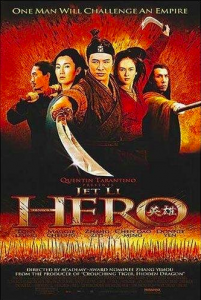
英雄 (“Hero”) (2002)
Director: Zhang Yi Mou
Starring: Jet Li, Donnie Yen, Zhang Zi Yi, Maggie Cheung, Tony Leung
Genre: Action, Drama
IMDb Description: A defence officer, Nameless, is summoned by the King of Qin regarding his success terminating three warriors.
洗澡 (“Shower”) (1999)
Director: Zhang Yang
Starring: Jiayi Du, Bing He, Wu Jiang
Genre: Comedy, Drama
IMDb Description: Shenzhen businessman, Da Ming, goes home to Beijing when he thinks his father has died.
Once Upon a Time in China (1991)
Director: Tsui Hark
Starring: Jet Li, Rosamund Kwan,
Genre: Action, Adventure, Biography
IMDb Description: Set in late 19th century Canton, this martial arts film depicts the stance taken by the legendary martial arts hero Wong Fei-Hung against foreign forces' plundering of China.
Dutch Movies
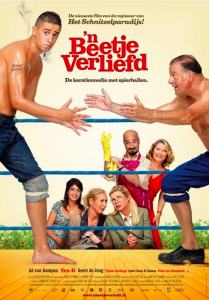
'n Beetje Verliefd (“Happy Family”) (2006)
Director: Martin Koolhoven
Starring: Ad van Kempen, Geert de Jong, Yes-R
Genre: Comedy, Romance
IMDb Description: Thijs is a elderly Dutch tomato grower. His adult daughters plan to have him move to a skyscraper-flat, leaving home and professional life, but he takes his adolescent grandson Omar's advice to refuse and keep living.
English (US/American) Movies
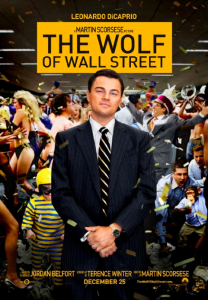
The Wolf of Wall Street (2013)
Director: Martin Scorsese
Starring: Leonardo DiCaprio, Margot Robbie, Jonah Hill
Genre: Drama
IMDb Description: Based on the true story of Jordan Belfort, from his rise to a wealthy stock-broker living the high life to his fall involving crime, corruption and the federal government.
Back to the Future (1995)
Director: Robert Zemeckis
Starring: Michael J. Fox, Christopher Lloyd
Genre: Action, Adventure
IMDb Description: A young man is accidentally sent 30 years into the past in a time-travelling DeLorean invented by his friend, Dr. Emmett Brown, and must make sure his high-school-aged parents unite in order to save his own existence.
Shooter (2007)
Director: Antoine Fuqua
Starring: Mark Wahlberg, Michael Peña
Genre: Action, Crime, Drama
IMDb Description: A marksman living in exile is coaxed back into action after learning of a plot to kill the president. Ultimately double-crossed and framed for the attempt, he goes on the run to find the real killer and the reason he was set up.
Seventh Son (2014)
Director: Sergey Bodrov
Starring: Ben Barnes, Julianne Moore, Jeff Bridges
Genre: Action, Adventure, Fantasy
IMDb Description: When Mother Malkin, the queen of evil witches, escapes the pit she was imprisoned in by professional monster hunter Spook decades ago and kills his apprentice, Spook recruits young Tom, the seventh son of a seventh son, to help him.
English (Australian) Movies

Australia (2008)
Director: Baz Luhrman
Starring: Hugh Jackman, Nicole Kidman
Genre: Drama
IMDb Description: Set in northern Australia before World War II, an English aristocrat who inherits a sprawling ranch reluctantly pacts with a stock-man in order to protect her new property from a takeover plot.
English (UK/British) Movies
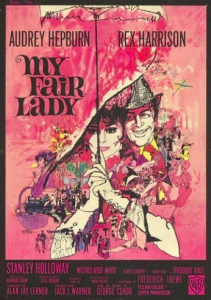
My Fair Lady (1964)
Director: George Cukor
Starring: Audrey Hepburn, Rex Harrison
Genre: Drama, Family, Musical
IMDb Description: A misogynistic and snobbish phonetics professor agrees to a wager that he can take a flower girl and make her presentable in high society.
Love Actually (2003)
Director: Richard Curtis
Starring: Hugh Grant, Martine McCutcheon, Colin Firth, Liam Neeson
Genre: Romantic Comedy
IMDb Description: Follows the lives of eight very different couples in dealing with their love lives in various loosely interrelated tales all set during a frantic month before Christmas in London, England.
Esperanto Movies
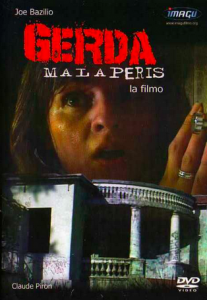
Gerda Malaperis (“Gerda Disappeared”) (2006)
Director: Joe Bazilio Costa
Starring: Eliezer Emanuel, Vitor Leitão, Lorena Leos
Genre: Mystery
Description: Based on one of the most famous stories in Esperanto literature by Claude Piron of Switzerland, this mystery begins when three college students witness the strange disappearance of a woman who is an expert in cryptic languages.
Filipino Movies

Himala (“Miracle”) (1982)
Director: Ishmael Bernal
Starring: Nora Aunor, Veronica Palileo, Spanky Manikan
Genre: Drama
IMDb Description: Elsa sees the Virgin Mary, who changes her life and causes hysteria in a poor, isolated village.
Magnifico (2003)
Director: Maryo J. De Los Reyes
Starring: Lorna Tolentino, Albert Martinez, Gloria Romero
Genre: Drama
IMDb Description: Even though he is not good in school and belongs to a poor and unfortunate family, Magnifico still has a big heart and a large amount of optimism, which enables him to help not only his family but also the community.
Finnish Movies

Paha Maa (“Frozen Land”) (2005)
Director: Aku Louhimies
Starring: Jasper Pääkkönen, Mikko Leppilampi, Pamela Tola
Genre: Drama
IMDb Description: When a schoolteacher is sacked, he projects his bad mood onto his troubled teen son. The son, in turn, buys a CD player from a pawnshop with counterfeit money. This causes a chain-reaction that wreaks havoc on many lives, as everyone transfers their problems to the next victim.
Rare Exports (2010)
Director: Jalmari Helander
Starring: Jorma Tommila, Peeter Jakobi, Onni Tommila
Genre: Adventure, Fantasy, Horror
IMDb Description: In the depths of the Korvatunturi mountains, 486 metres deep, lies the closest ever guarded secret of Christmas. The time has come to dig it up! This Christmas everyone will believe in Santa Claus.
French (France) Movies
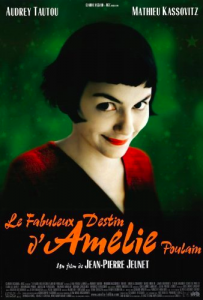
Amélie (2001)
Director: Jean-Pierre Jeunet
Starring: Audrey Tautou, Mathieu Kassovitz, Rufus
Genre: Comedy Romance
IMDb Description: Amelie is an innocent and naive girl in Paris with her own sense of justice. She decides to help those around her and, along the way, discovers love.
La Fille Sur Le Pont (“The Girl on the Bridge”) (1999)
Director: Patrice Leconte
Starring: Vanessa Paradis, Daniel Auteuil, Frédéric Pfluger
Genre: Comedy, Drama, Romance
IMDb Description: It's night on a Paris bridge. A girl leans over the Seine River with tears in her eyes and a violent yearning to drown her sorrows. Out of nowhere, someone takes an interest in her.
La Mystérieuse Mademoiselle C (“The Mysterious Miss C”) (2002)
Director: Richard Ciupka
Starring: Marie-Chantal Perron, Gildor Roy, Ève Lemieux
Genre: Comedy, Drama, Family
Description: An eccentric teacher causes children at her elementary school to change the way they look at themselves.
Populaire (2012)
Director: Régis Roinsard
Starring: Romain Duris, Féodor Atkine, Déborah François
Genre: Comedy, Romance, Sport
IMDb Description: It’s 1958. Rose is a terrible secretary but a demon typist. Her handsome boss resolves to turn her into the fastest typist in the world.
Le Magnifique (“The Man From Acapulco”) (1973)
Director: Philippe de Broca
Starring: Jean-Paul Belmondo, Jacqueline Bisset
Genre: Action, Comedy, Fantasy
Description: An author of spy novels fantasizes about his neighbour being his lover in his latest book.
Une vieille maîtresse (“The Last Mistress”) (2007)
Director: Catherine Breillat
Starring: Asia Argento, Fu'ad Aït Aattou, Roxane Mesquida
Genre: Drama, Romance
IMDb Description: Secrets, rumours and betrayals surround the upcoming marriage between a young dissolute man and a virtuous woman of the French aristocracy.
The Intouchables (2011)
Directors: Olivier Nakache, Eric Toledano
Starring: François Cluzet, Omar Sy, Anne Le Ny
Genre: Biography, Comedy, Drama
IMDb Description: After he becomes a quadriplegic from a paragliding accident, an aristocrat hires a young man from the projects to be his caregiver.
De rouille et d'os (“Rust and Bone”) (2012)
Director: Jacques Audiard
Starring: Marion Cotillard, Matthias Schoenaerts, Armand Verdure
Genre: Drama, Romance
IMDb Description: Put in charge of his young son, Alain leaves Belgium for Antibes to live with his sister and her husband as a family. Alain's bond with Stephanie, a killer whale trainer, grows deeper after Stephanie suffers a horrible accident.
Les Enfants du Paradis (“The Children of Paradise”) (1945)
Director: Marcel Carné
Starring: Arletty, Jean-Louis Barrault, Pierre Brasseur
Genre: Drama, Romance
IMDb Description: The theatrical life of a beautiful courtesan and the four men who love her.
Les Valseuses (“Going Places”) (1974)
Director: Bertrand Blier
Starring: Gérard Depardieu, Patrick Dewaere, Miou-Miou
Genre: Comedy, Drama
IMDb Description: Two whimsical, aimless thugs harass and assault women, steal, murder, and alternately charm, fight, or sprint their way out of trouble.
L'inconnu du lac (“Stranger by the Lake”) (2013)
Director: Alain Guiraudie
Starring: Pierre Deladonchamps, Christophe Paou, Patrick d'Assumçao
Genre: Drama Thriller
IMDb Description: Summertime. A cruising spot for men, tucked away on the shores of a lake. Franck falls in love with Michel, an attractive, potent and lethally dangerous man. Franck knows this, but wants to live out his passion anyway.
Le Chef (2012)
Director: Daniel Cohen
Starring: Jean Reno, Michaël Youn, Raphaëlle Agogué
Genre: Comedy
IMDb Description: A veteran chef faces off against his restaurant group's new CEO, who wants the establishment to lose a star from its rating in order to bring in a younger chef who specialises in molecular gastronomy.
French (Quebec) Movie
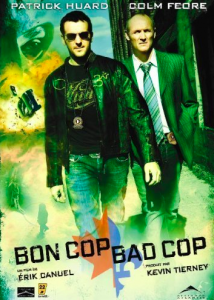
Bon Cop, Bad Cop (2006)
Director: Erik Canuel
Starring: Michel Beaudry, Patrice Bélanger, Pierre Boudreau
Genre: Action, Comedy, Crime
IMDb Description: Two Canadian detectives, one from Ontario and the other from Quebec, must work together when a murder victim is found on the Ontario-Quebec border line.
German Movies

Lola Rennt (“Run Lola Run”) (1998)
Director: Tom Tykwer
Starring: Franka Potente, Moritz Bleibtreu, Herbert Knaup
Genre: Crime, Thriller
IMDb Description: After a botched money delivery, Lola has 20 minutes to come up with 100,000 Deutschmarks.
Das Leben der Anderen (“The Lives of Others”) (2006)
Director: Florian Henckel von Donnersmarck
Starring: Ulrich Mühe, Martina Gedeck, Sebastian Koch
Genre: Drama, Thriller
IMDb Description: In 1984 East Berlin, an agent of the secret police, conducting surveillance on a writer and his lover, finds himself becoming increasingly absorbed by their lives.
Barfuss (“Barefoot”) (2005)
Director: Til Schweiger
Starring: Hans-Peter Abts, Gustav Adolph, Micha Breidenstein
Genre: Comedy, Drama, Romance
IMDb Description: Nick, a hedonistic bachelor, falls for an escaped mental patient.
Soul Kitchen (2009)
Director: Fatih Akin
Starring: Adam Bousdoukos, Moritz Bleibtreu, Pheline Roggan
Genre: Comedy, Drama
IMDb Description: In Hamburg, German-Greek chef Zinos unknowingly disturbs the peace in his locals-only restaurant by hiring a more talented chef.
Im Juli (“In July”) (2000)
Director: Fatih Akin
Starring: Moritz Bleibtreu, Christiane Paul, Mehmet Kurtulus
Genre: Adventure, Comedy, Romance
IMDb Description: Can Daniel follow the sun from Hamburg to the Bosporus by Friday to meet his love?
Goodbye Lenin! (2003)
Director: Wolfgang Becker
Starring: Daniel Brühl, Katrin Saß, Chulpan Khamatova
Genre: Comedy, Drama, Romance
IMDb Description: In 1990, to protect his fragile mother from a fatal shock after a long coma, a young man must keep her from learning that her beloved nation of East Germany as she knew it has disappeared.
Schlussmacher (2013)
Directors: Matthias Schweighöfer, Torsten Künstler
Starring: Sascha Alexander, Ariane Pochon, Martin Neuhaus
Genre: Comedy
IMDb Description: An employee at a professional separation agency, a business that helps couples break up, Paul tries to tackle the problems that come with Toto, the boyfriend of a customer, while he has his own thinking to do about love and relationships.
Lore (2012)
Directors: Cate Shortland
Starring: Saskia Rosendahl, Kai-Peter Malina, Nele Trebs
Genre: Drama, Romance, Thriller
IMDb Description: As the Allies sweep across Germany, Lore leads her siblings on a journey that exposes them to the truth of their parents' beliefs. An encounter with a mysterious refugee forces Lore to rely on a person she has always been taught to hate.
Das Boot (“The Boot”) (1981)
Directors: Wolfgang Petersen
Starring: Jürgen Prochnow, Herbert Grönemeyer, Klaus Wennemann
Genre: Adventure, Drama, War
IMDb Description: The claustrophobic world of a WWII German U-boat; boredom, filth, and sheer terror.
M (1931)
Directors: Fritz Lang
Starring: Peter Lorre, Ellen Widmann, Inge Landgut
Genre: Crime, Drama, Thriller
IMDb Description: When the police in a German city are unable to catch a child-murderer, other criminals join in the manhunt.
Hindi Movies

Veer Zaara (2004)
Director: Yash Chopra
Starring: Shah Rukh Khan, Preity Zinta, Rani Mukerji
Genre: Drama, Musical, Romance
IMDb Description: The story of the love between Veer Pratap Singh, an Indian, and Zaara Hayaat Khan, a Pakistani...a love so great it knows no boundaries…
Dilwale Dulhania Le Jayenge (1995)
Director: Aditya Chopra
Starring: Shah Rukh Khan, Kajol, Amrish Puri
Genre: Comedy, Drama, Musical
IMDb Description: A young man and woman - both of Indian descent but born and raised in Britain - fall in love during a trip to Switzerland. However, the girl's traditional father takes her back to India to fulfill a betrothal promise.
Delhi Belly (2011)
Directors: Abhinay Deo, Akshat Verma
Starring: Imran Khan, Vir Das, Kunaal Roy Kapur
Genre: Comedy, Crime, Drama
IMDb Description: Three struggling roommates unknowingly become potential prey of a ruthless gangster.
Indonesian Movies
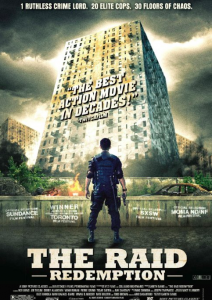
The Raid Redemption (2011)
Director: Gareth Huw Evans
Starring: Iko Uwais, Ananda George, Ray Sahetapy
Genre: Action, Thriller
IMDb Description: A S.W.A.T. team becomes trapped in a tenement run by a ruthless mobster and his army of killers and thugs.
Pesan Dari Surga (“Messages from Heaven”) (2006)
Director: Sekar Ayu Asmara
Starring: Luna Maya, Vino G. Bastian, Ario Bayu
Genre: Drama
Description: The plight of five young members of a band as they deal with various trial and tribulations
Italian Movies
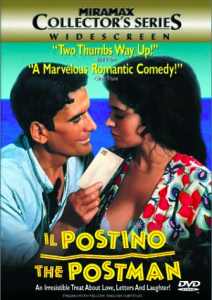
Il Postino: The Postman (1994)
Director: Michael Radford
Starring: Massimo Troisi, Philippe Noiret, Maria Grazia Cucinotta
Genre: Biography, Drama, Comedy
IMDb Description: A simple Italian postman learns to love poetry while delivering mail to a famous poet; he uses this to woo local beauty Beatrice.
Cinema Paradiso (1988)
Director: Giuseppe Tornatore
Starring: Philippe Noiret, Enzo Cannavale, Antonella Attili
Genre: Comedy, Drama
IMDb Description: A filmmaker recalls his childhood, when he fell in love with the movies at his village's theatre and formed a deep friendship with the theatre's projectionist.
La vita è bella (“Life is Beautiful”) (1997)
Director: Roberto Benigni
Starring: Roberto Benigni, Nicoletta Braschi, Giorgio Cantarini
Genre: Comedy, Drama, Romance
IMDb Description: When an open-minded Jewish librarian and his son become victims of the Holocaust, he uses a perfect mixture of will, humour and imagination to protect his son from the dangers around their camp.
Pane e tulipani (“Bread and Tulips”) (2000)
Director: Silvio Soldini
Starring: Licia Maglietta, Bruno Ganz, Giuseppe Battiston
Genre: Comedy, Romance
IMDb Description: After being forgotten in a highway café during a bus trip, a housewife decides to start a new life by herself in Venice.
Japanese Movies

僕の彼女はサイボーグ (“My Girlfriend is a Cyborg” or “Cyborg Girl”) (2008)
Director: Jae-young Kwak
Starring: Haruka Ayase, Keisuke Koide, Risa Ai
Genre: Action, Comedy, Romance
IMDb Description: Jiro is a lonely university student. One day he meets a beautiful and interesting woman who turns out to be a Cyborg lacking manners and emotions.
七人の侍 (“The Seven Samurai”) (1954)
Director: Akira Kurosawa
Starring: Toshirô Mifune, Takashi Shimura, Keiko Tsushima
Genre: Action, Drama
IMDb Description: A poor village under attack by bandits recruits seven unemployed samurai to help them defend themselves.
るろうに剣心 (“Rurouni Kenshin”) (2012)
Director: Keishi Ohtomo
Starring: Takeru Satô, Yû Aoi, Emi Takei
Genre: Action
IMDb Description: In 1868, after the end of the Bakumatsu war, the former assassin Kenshin Himura promises to defend those in need without killing. Kenshin wanders through Japan with a reverse-edged sword
Korean Movies

쉬리 (“Shiri” or “Swiri”) (1999)
Director: Je-kyu Kang
Starring: Suk-kyu Han, Min-sik Choi, Yunjin Kim
Genre: Action, Thriller, Drama
IMDb Description: North and South Korean superspies battle and fall in love.
아라한 장풍 대작전 (“Arahan”) (2004)
Director: Seung-wan Ryoo
Starring: Seung-beom Ryu, So-yi Yoon, Sung-kee Ahn
Genre: Action, Comedy
Description: An earnest but inept rookie cop is injured in the line of work by a young martial arts student who studies under her father and the six Masters of Tao. They believe the cop has the makings of a great warrior.
엽기적인 그녀 (“My Sassy Girl”) (2001)
Director: Jae-young Kwak
Starring: Tae-hyun Cha, Ji-hyun Jun, In-mun Kim
Genre: Romance, Comedy
Description: A college student becomes involved with a self-centered young woman who humiliates him at every turn.
Latvian Movie
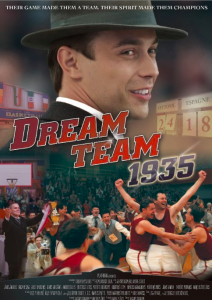
Sapņu Komanda 1935 (“Dream Team 1935”) (2012)
Director: Aigars Grauba
Starring: Janis Amanis, Inga Alsina, Vilis Daudzins
Genre: Comedy, Drama, History
IMDb Description: A story about the Latvian basketball team, which won the first-ever European Championships in 1935, and its enthusiastic head coach Valdemars Baumanis.
Norwegian Movie
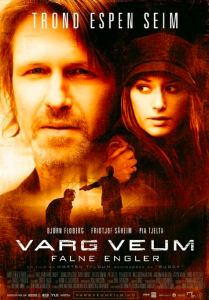
Varg Veum - Falne engler (“Fallen Angel”) (2008)
Director: Morten Tyldum
Starring: Trond Espen Seim, Per Kjerstad, Bjørn Floberg
Genre: Crime, Drama, Thriller
IMDb Description: Murder and trouble hits Veum when he meets up with classmates in the rock-band Camp, when he resumes contact with a former flame Rebecca, now the wife of his buddy. A Varg Veum mystery based on the best-selling crime novel by Gunnar Staalesen.
Polish Movie
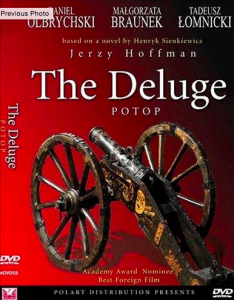
Potop (“The Deluge”) (1974)
Director: Jerzy Hoffman
Starring: Daniel Olbrychski, Malgorzata Braunek, Tadeusz Lomnicki
Genre: Adventure, History, Romance
IMDb Description: During the 1655 war between Protestant Sweden and Catholic Polish-Lithuanian Commonwealth, some Polish-Lithuanian nobles side with Swedish king Charles X Gustav while others side with the Polish king Jan Kazimierz.
Portuguese (Brazil) Movies
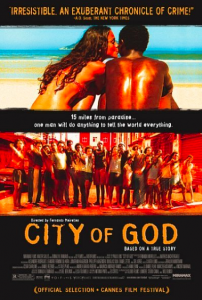
Cidade de Deus (“City of God”) (2012)
Directors: Fernando Meirelles, Kátia Lund
Starring: Alexandre Rodrigues, Matheus Nachtergaele, Leandro Firmino
Genre: Crime, Drama
IMDb Description: Two boys growing up in a violent neighbourhood of Rio de Janeiro take different paths: one becomes a photographer, the other a drug dealer.
Tropa de Elite (“Elite Squad”) (2007)
Director: José Padilha
Starring: Wagner Moura, André Ramiro, Caio Junqueira
Genre: Action, Crime, Drama
IMDb Description: Captain Nascimento has to find a substitute for his occupation while trying to take down drug dealers and criminals before the Pope comes to Rio de Janeiro, Brazil.
Odeio o Dia dos Namorados (“I Hate Valentine’s Day”) (2013)
Director: Roberto Santucci
Starring: Heloísa Périssé, Marcelo Saback, Daniel Boaventura
Genre: Comedy, Romance
IMDb Description: After having a car accident, a cold businesswoman recounts the events of her life that led to that moment with the help of the ghost of her deceased best friend and work partner.
Entre Nós (2013)
Directors: Paulo Morelli, Pedro Morelli
Starring: Júlio Andrade, Caio Blat, Diogo da Silva
Genre: Drama
IMDb Description: A group of literature-loving friends bury letters to be opened 10 years later when they will confront the dreams of their youth with what the future has held in store for them.
Portuguese (Portugal) Movies
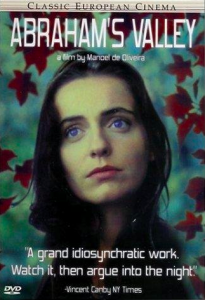
Vale Abraão (“Abraham’s Valley”) (1993)
Director: Manoel de Oliveira
Starring: Leonor Silveira, Cécile Sanz de Alba, Luís Miguel Cintra
Genre: Drama
IMDb Description: Ema is a very attractive but innocent girl, so pretty that cars crash in her presence. Young Ema marries Dr. Carlo Paiva, who she is not attracted to, but is her father's friend.
O Pai Tirano (“The Tyrannical Father”) (1941)
Director: António Lopes Ribeiro
Starring: Vasco Santana, Francisco Ribeiro, Leonor Maia
Genre: Comedy
IMDb Description: While rehearsing for the annual play, a clerk tries to regain the attention of his beloved, in a comedy of equivoques.
Russian Movies

Метро (“Metro”) (2012)
Director: Anton Megerdichev
Starring: Sergey Puskepalis, Anatoliy Belyy, Svetlana Khodchenkova
Genre: Action, Thriller
IMDb Description: Terror strikes the underground train system in Moscow in the form of a flood from a collapsed tunnel.
ночной дозор (“Night Watch”) (2004)
Director: Timur Bekmambetov
Starring: Konstantin Khabenskiy, Vladimir Menshov, Mariya Poroshina
Genre: Action, Fantasy, Thriller
IMDb Description: A fantasy-thriller set in present-day Moscow where the respective forces that control daytime and nighttime do battle.
Возвращение (“The Return”) (2003)
Director: Andrey Zvyagintsev
Starring: Vladimir Garin, Ivan Dobronravov, Konstantin Lavronenko
Genre: Drama, Mystery, Thriller
IMDb Description: In the Russian wilderness, two brothers face a range of new, conflicting emotions when their father - a man they know only through a single photograph - resurfaces.
Brat (“Brother”) (1997)
Director: Aleksey Balabanov
Starring: Sergey Bodrov Jr., Viktor Sukhorukov, Svetlana Pismichenko
Genre: Crime, Drama, Romance
IMDb Description: An ex-soldier with a personal honour code enters the family crime business in St. Petersburg, Russia.
Неадекватные люди (“Inadequate People”) (2010)
Director: Roman Karimov
Starring: Ilya Lyubimov, Ingrid Olerinskaya, Evgeniy Tsyganov
Genre: Comedy, Drama, Romance
IMDb Description: Adequacy is relative. Vitalik, the main character of the movie, seems to be pretty normal. With a respectable office job, a comfy little dwelling and a personal couch doctor, Vitalik looks as adequate as a human can possibly be.
Кухня в Париже (“Kitchen in Paris”) (2014)
Director: Dmitriy Dyachenko
Starring: Dmitriy Nazarov, Mark Bogatyrev, Elena Podkaminskaya
Genre: Comedy
Description: A restaurant in Moscow is closed after they mess up a presidential dinner. The chef and owner do not despair and move the business to Paris.
Spanish (Latin America) Movies
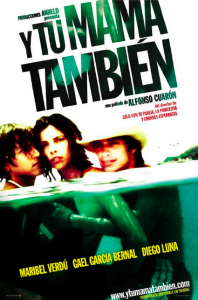
Y Tu Mamá También (2001)
Director: Alfonso Cuarón
Starring: Maribel Verdú, Gael García Bernal, Daniel Giménez Cacho
Genre: Adventure, Comedy, Drama
IMDb Description: In Mexico, two teenaged boys and an attractive older woman embark on a road trip and learn a thing or two about life, friendship, sex, and each other.
El infierno (“El Narco”) (2010)
Director: Luis Estrada
Starring: Damián Alcázar, Joaquín Cosío, Ernesto Gómez Cruz
Genre: Action, Comedy, Crime
IMDb Description: Benny gets involved in the narcotics business after he is deported from the United States, then discovers that a criminal life is not as lucrative as he expected.
La misma luna (“Under the Same Moon”) (2007)
Director: Patricia Riggen
Starring: Eugenio Derbez, Kate del Castillo, Adrian Alonso
Genre: Drama
IMDb Description: A young Mexican boy travels to the U.S. to find his mother after his grandmother passes away.
Sin Nombre (2009)
Director: Cary Fukunaga
Starring: Paulina Gaitan, Marco Antonio Aguirre, Leonardo Alonso
Genre: Adventures, Crime Drama
IMDb Description: A young Honduran girl and a Mexican gangster are united in a journey across the American border.
Spanish (Spain) Movies
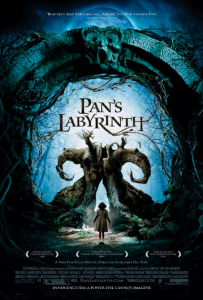
El laberinto del fauno (“Pan’s Labyrinth”) (2006)
Director: Guillermo del Toro
Starring: Ivana Baquero, Ariadna Gil, Sergi López
Genre: Drama, Fantasy, War
IMDb Description: In the falangist Spain of 1944, the bookish young stepdaughter of a sadistic army officer escapes into an eerie but captivating fantasy world.
Tristana (1970)
Director: Luis Buñuel
Starring: Catherine Deneuve, Fernando Rey, Franco Nero
Genre: Drama
IMDb Description: When the young woman Tristana's mother dies, she is entrusted to the guardianship of the well-respected though old Don Lope.
Tres metros sobre el cielo (“Three Steps Above Heaven”) (2010)
Director: Fernando González Molina
Starring: Mario Casas, María Valverde, Álvaro Cervantes
Genre: Drama, Romance
IMDb Description: The story of two young people who belong to different worlds. Babi (Maria Valverde) is a girl from upper-middle class that is educated in goodness and innocence. Hache (Mario Casas) is a rebellious, impulsive boy, with an appetite for risk and danger embodied in endless fights and illegal motorbike races.
Swedish Movie
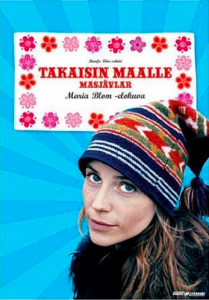
Masjävlar (“Dalecarlians”) (2004)
Director: Maria Blom
Starring: Sofia Helin, Kajsa Ernst, Ann Petrén
Genre: Comedy, Drama
IMDb Description: Mia, who's living in Stockholm, comes home to her small childhood town to celebrate her father's birthday.
Turkish Movie
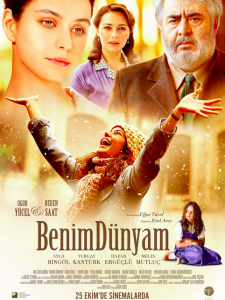
Benim Dünyam (“My World”) (2013)
Director: Ugur Yücel
Starring: Beren Saat, Ugur Yücel, Ayça Bingöl
Genre: Drama
Description: An unorthodox teacher changes the lives of a family when he educates a young woman who lost her sight and hearing at the age of two.
Visayan Movie
Matud nila (1991)
Director: Leroy Salvador
Starring: Gloria Sevilla, Suzette Ranillo, Mat Ranillo III
Genre: Drama
Description: A dramatic story of a family’s attempts to deal with deception and adultery.
Movies in Multiple Languages
These films are great if you’re learning a number of different languages.
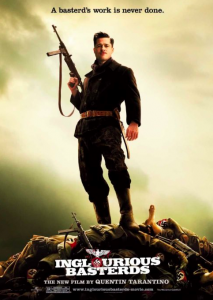
Inglourious Basterds (2009)
Languages: English, German, French
Director: Quentin Tarantino
Starring: Brad Pitt, Diane Kruger, Eli Roth
Genre: Adventure, Drama, War
IMDb Description: In Nazi-occupied France during World War II, a plan to assassinate Nazi leaders by a group of Jewish U.S. soldiers coincides with a theatre owner's vengeful plans for the same.
Idiot’s Delight (1939)
Languages: English, Russian, Esperanto
Director: Clarence Brown
Starring: Clark Gable, Norma Shearer
Genre: Comedy, Musical, Drama
IMDb Description: A group of disparate travellers are caught are thrown together in a posh Alpine hotel when the borders are closed at the start of WWII.
Les femmes du 6e étage (“The Women on the 6th Floor”) (2010)
Languages: Spanish, French
Director: Philippe Le Guay
Starring: Fabrice Luchini, Sandrine Kiberlain, Natalia Verbeke
Genre: Comedy
IMDb Description: In 1960s Paris, a conservative couple's lives are turned upside down by two Spanish maids.
2009: Lost Memories (2002)
Languages: Korean, Japanese
Director: Si-myung Lee
Starring: Dong-gun Jang, Tôru Nakamura, Jin-ho Seo
Genre: Action, Drama, Sci-Fi
IMDb Description: A failed assassination attempt in Harbin, China in 1909 changes the course of history. Now, two Japanese Bureau of Investigation (JBI) agents must find the connection between it and an ancient Korean artifact.
Friendship! (2010)
Languages: German, English
Director: Markus Goller
Starring: Matthias Schweighöfer, Friedrich Mücke, Alicja Bachleda
Genre: Comedy
IMDb Description: A young man from East Germany travels to San Francisco to search for his father, who fled 12 years ago.
No se aceptan devoluciones (“Instructions Not Included”) (2013)
Languages: Spanish, English
Director: Eugenio Derbez
Starring: Eugenio Derbez, Karla Souza, Jessica Lindsey
Genre: Comedy, Drama
IMDb Description: A man who has made a new life for himself and the daughter left on his doorstep 6 years ago finds his family threatened when the birth mother resurfaces.
Maria Llena eres de Gracia (“Maria Full of Grace”) (2004)
Languages: Spanish, English
Director: Joshua Marston
Starring: Catalina Sandino Moreno, Guilied Lopez, Orlando Tobón
Genre: Crime, Drama
IMDb Description: A pregnant Colombian teenager becomes a drug mule to make some desperately needed money for her family.
English Movies Dubbed Into Other Languages
A lot of the Fluent in 3 Months community said they enjoyed watching movies which were originally produced in English, and then dubbed into another language. Disney movies made the top of this list with Frozen being a crowd favourite.
Here are a list of English-language movies that are worth checking out in dubbed versions:
Frozen or anything animated from Disney (2013)
Any of the Harry Potter films (2001 - 2011)
The Lord of the Rings trilogy (2001 - 2003)
Dallas Buyers Club (2013)
Fantastic Mr. Fox (2009)
Conclusion: When You’re Burned Out from Language Learning, Watch a Movie
Language learning can be draining. The trick to maintain your motivation with languages is to work smart, not hard, which means keeping some variety in your study routine to keep you from burning out.
If you’re finding your motivation lacking, or your mind begins to wander, watch a movie in your target language. It keeps you exposed to the language in a fun way.
Thanks to all the readers for these amazing film suggestions. Know of a film that should be on the list? Add your ideas to the list here.
The post 91 of the Best Movies and TV Shows from Around the World appeared first on Fluent in 3 months - Language Hacking and Travel Tips.




July 8, 2016
10 Good Reasons to Learn French

Things were going great, until one night when it came time to order dessert. There was a chocolate soufflé on the menu that looked divine. Gooey, chocolate cream inside a warm, chocolate cake. I had to have it.
When the waiter came around, I sat up straight and politely requested a “chocolate suf-ful.”
“Suf-ful?” the waiter questioned?
“Um...yeah, chocolate suf-ful,” I said as I pointed at the menu.
“Ah, soo- fley,” the waiter corrected me with a smirk, and he jotted down my order.
My cousin next to me burst out laughing. I was mortified. How was I supposed to know the correct pronunciation? I was simply reading it how it was written!
The next year at school, I signed myself up for French class. I assumed French would be a fun, easy, and important language to learn. And I was right.
See, learning a language can be hard, but it doesn’t have to be. French is a wonderful language for many worthwhile reasons. Let’s take a look at a few of the benefits of speaking French (some more lighthearted than others).
1. Because Chocolate Soufflé (and Other French Cuisine)

So that night at the dinner table had a big positive effect on my life. Did I mention that the chocolate soufflé was the most tastiest dessert I’ve ever eaten?
French cuisine is filled with tasty treats: croissants, pastries, tarts, baguettes, cheese, wine, crepes, macarons – I could literally go on for hours about how delicious French food is. Learning French means you have an excuse to sample the goods! And, unlike me, you’ll be able to pronounce the dish correctly.
2. Stop Feeling Embarrassed at Restaurants

Learn from my mistakes and get your pronunciation right before you embarrass yourself.
For those of you unfamiliar with the French language, most words that end in “er” and “et” aren’t pronounced how they’re spelled.
By learning French, you can finally avoid that judgmental stare from your waiter for mispronouncing “soufflé” or “escargot”. Or, if you’re like me, you can finally stop avoiding these delicious dishes for fear of mispronunciation!
3. Woo Your Crush in the Language of Love

Looking for some romance in your life? There’s nothing more romantic than speaking French (except speaking French AND cooking chocolate soufflé for me!). After all, it is the language of love. Or should I say, *c’est la langue d’amour? *
You could tell somebody that their eyes are beautiful, but it’s much more romantic to say “T’as de beaux yeux, tu sais.”. It rolls off the tongue poetically, and many French speakers will recognize it from the classic French romance film Le Quai des Brumes.
Speaking French will help you capture the heart of that cutie you’ve had your eye on. Which brings us to our next point…
4. “Ooh La La!” Become an Expert French Kisser

Where do you think it got its name? Learning French will automatically make you a better kisser. It’s just common sense.
You will also become a better chef. You can add French fries, French toast, and French onion soup to your repertoire! And you can say, “Pardon my French,” and truly mean it!
5. Because French Comedy is Hilarious - and All Over YouTube

Jokes aside, there are more than a few French videos that will make you laugh so hard you’ll spit out French onion soup out of your nose (pardon my French).
One of my personal favorites is an animated film, Kirikou. The film is about a small boy (emphasis on “small”) who is born into a cursed village. He takes it upon himself to fight the evil Sorcerer and remove the curse.
This may sound like your average children’s cartoon, but when you see that Kirikou is a small, naked baby with a mohawk (yes, I’m serious), you’ll understand just how funny this French children’s film is. The theme song, which is so catchy you’ll be singing it for days, tells of how “Kirikou is not big, but he is brave.”
OK, you’ve got to watch it to get it. But trust me, the film is absolutely hilarious, and understanding French only makes it that much better.
Another video worth watching is Flight of the Concord’s Foux De Fa Fa, a satirical song about learning French. This video is funny for everyone, but when you speak French, you can truly understand the jokes in the song, and trust me, you’ll die of laughter. Plus, you can finally understand who Frère Jacques is and why there’s an entire song written about him.
And if you’re not into funny songs but you understand the benefits of learning to sing in your target language, you’ll love the selection of French songs out there.
6. French is for Special Stars...

Most Americans may not speak a second language, but if they do, it’s usually Spanish.
So, why study French instead of Spanish?
Whenever I whip out my French, people are impressed because they are surprised that an American has learned it. Don’t you want to impress people too?
7. … But Not Too Special

Impressing people is great, but let’s be honest, practicality is even better!
French is spoken on five different continents, and is the sixth most widely spoken language in the world. It’s also the third most widely used language on the Internet. That means French is in demand.
Speaking French will help you navigate on your travels and you’ll be able to understand the random French comments on your your Reddit account. If that’s not compelling than I don’t know what is.
8. French is Basically English (Well, Almost…)

Ever heard of cognates? A cognate is a word that shares the same root word in another language.
Basically, it’s a word that sounds the same in two different languages. And French has tons of these, which means learning French can be easy!
Curiosité, activité, adventure and extraordinaire – all words to describe your French journey and all words you already know! Most are formal words in English, but when you learn French, they mean that you won’t be starting from zero.
For a complete list, click here.
9. Once You’ve Sparked Your Inner Romantic, You’ll Never Stop

Along with a having a long list of English cognates that you already know, French is also a Romance language, meaning it is one of the six languages that stems from Latin.
This means French is quite similar to Italian, Spanish, Portuguese, Romanian and English. These languages have lots of cognates, similar grammar structure and many shared sounds. So if you learn French, it will be easier for you to pick up another romance language. Why stop at one?
10. Become a Citizen of the World
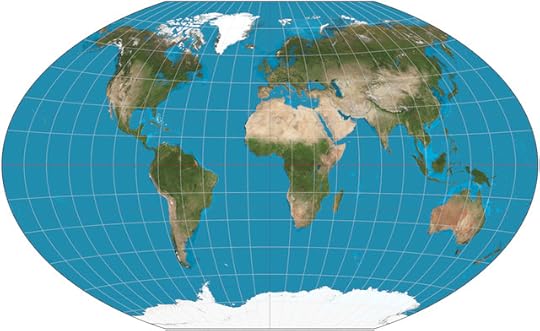
Learning French won’t help you only in France. It can help you travel around Belgium, West Africa, Canada, Haiti, Luxembourg, Madagascar, Mali, Rwanda, Switzerland, and many more places! Check out this map to see places all around the world that speak French. You’ll be surprised.
For those of you who are willing to give language immersion a try, you can do so in five continents! Pretty neat, right?!
When Will You Join the 300 Million?
Nearly 300 million people around the world speak French. That’s 300 million new friends just waiting to be made!
Learning French will expose you to a new world of delicious foods and incredible culture. It can help you woo the love of your life or simply communicate with the plethora of French speakers out there. And lucky for you, learning French is not as hard as you may think. So don’t waste another second! Get started today.
Image credits: 1, 2, 3, 4, 6, 7, 9, 10
The post 10 Good Reasons to Learn French appeared first on Fluent in 3 months - Language Hacking and Travel Tips.




July 1, 2016
How to Create an Abundance Mindset in Your Language Learning

What if I told you that the solution you need is already there if only you’re brave and open enough to reach out for it? What if I told you that there’s no such thing as being stuck or not good enough?
Well, that’s what I’m about to tell you. I’m about to show you one of your most powerful language learning tools that you already have and that’s actually in your head. All you need is to recognise that you have it and learn how to use it.
It’s called the abundance mindset.
Would you like to know how it can help you in your language studies? If so, read on!
Abundance Mindset Definition: What is the Abundance Mindset?
What is the abundance mindset? And how is it different from a scarcity mindset?
Picture this. We’re on a desert island together following a shipwreck. We crawl out of the water and onto the beach. We look around and there’s nobody else to be seen. There are some palm trees, rocks and a vast expanse in front of us. That’s it.
We’re hungry and thirsty, and pretty desperate. As we walk across the beach, we spot a bottle of water and a sandwich. It’s good news because that’s what we need right now. We share them between us and try to enjoy every sip and every bite because we fear what will happen when they’re gone.
Are we going to starve?
And then it happens - the sandwich is gone and the water is gone, and we’re back to square one. We’ve exhausted our resources. We have a problem - we’re hungry - and can’t see a solution. There’s nobody about and we’re stuck. We sit and wait for rescue that may never come.
What if we got up and went for a walk? What if we stopped giving in to fear and went into the bush? What could possibly happen then?
A new sea of opportunities could potentially open up right in front of our eyes. Because what we need is probably there already. There might be berries and mushrooms, and birds that lay eggs, maybe even other human beings that cook hot food that they could offer to us.
And we thought there was nothing else!
And that’s precisely what the difference between a scarcity mindset and an abundance mindset is all about.
But you’re not on a desert island and you may wonder how the story I’ve just told you can help you become a more effective language learner.
Well, it can. And I’m about to show you how.
Let’s start by looking at what scarcity and abundance look like in practice when applied to language learning.
What Does Scarcity Look Like in Language Learning?
Let’s take a look at some examples of the scarcity mindset in language learning.
The purpose of looking at specific examples is to help you recognise it and spot situations where you fall victim to scarce thinking. That way, you can consciously move to an abundance mindset, and become a better language learner as a result.
Scarcity is about thinking there’s only one solution to every problem. It’s about believing that there’s always one correct answer and that when you’re stuck, you need to do one specific thing to move on. It’s also about thinking that you or your skills are not good enough.
To look at some examples, with a scarcity mindset you might think that::
You’re not able to talk about what you’re going to do when you go on holiday because you don’t know how to use the future tense
You can’t explain what job you do because you don’t know how to translate your job title from your native language to your target language
You’re not fluent because you simply don’t know enough vocabulary
You’re not good enough at speaking your target language because you don’t know any native speakers or haven’t ever been abroad
You’re failing because you keep using incorrect grammar or struggling to recall vocabulary
You can’t learn a language because you’re too busy with other things
Let’s now look at examples of what abundance looks like so that we’re clear about the difference between the two mindsets.
What Does Abundance Look Like in Language Learning?
Unlike scarcity, abundance is about spotting opportunities where you think there might be none. It’s about making the most of what’s you’ve got - the words you know, the sounds you can recognise, the resources you have.
With an abundance mindset, you’re aware that:
You can still communicate even if you don’t know the exact tense.
You’re creative about it. If you want to talk about a holiday you’re about to go on, you use the present tense instead of the future tense you don’t know (for example, you say ‘I want to do X’ instead of ‘I will/I’m going to do X’)
You can explain your job by talking about the various tasks you do, even if you don’t know the exact translation of your job title
You can be fluent by building your confidence and speaking a lot, even if you speak using simple language
You don’t have to go abroad to practise your target language. You’re able to find alternative ways of doing that (for example, with a language partner online, or speaking to yourself)
You can make progress even if you don’t know much grammar. You set yourself goals related to specific aspects of learning, such as being able to use a particular set of vocabulary when speaking
You don’t use the ‘I haven’t got time excuse’. You find time in your schedule to do little language activities and understand that fluency is made up of small wins
Compare this list with the scarcity mindset list, above. Do you notice the difference? They’re pretty much polar opposites.
Now you should be able to tell the difference between a scarcity mindset and an abundance mindset. What should you do next, though? How can this knowledge help you become a more effective language learner?
Below, I set out four steps that will help you move from a scarcity to an abundance mindset, and become a more effective and confident language learner.
Abundance Mindset Exercises: How to Lose Your Scarcity Mindset in Your Language Learning
Step 1: Make the Most of Your Current Vocabulary
We’re all complex human beings with a richness of ideas, experiences and things we’re passionate about. When we meet new people, we want to talk about these things with them.
One of the main hurdles, in my experience, is trying to communicate all that we’ve got to offer using the (sometimes limited) language we know.
The truth is, you don’t need complex language to explain complex ideas. You’ve already got what you need. To move to an abundance mindset, you need to get into the ‘explainer’ mode.
Imagine a child asks you what a word means - let’s say it’s the word ‘extraordinary’. You’ll be able to find a way to explain it without using the actual word. The same principle applies to speaking your target language. You use words that you do know to explain what you don’t know how to translate directly into your target language.
Step 2: Keep Track of How Far You’ve Come
An abundance mindset means that you frequently look at what you’ve learned and what you haven’t learned to accelerate your progress.
Do you know how much you already know? A lot of language learners don’t know exactly what it is that they know.
Write it down. You can do this at the end of each week, for example. Write down the things that you’ve learned or that you’ve got better at this week. Then, look at your goals (which you should have written down as well). How have the things you’ve learned helped you move closer towards your goals? What else could you have done that you haven’t?
By doing this exercise, you’re doing two things - you’re recognising your own achievements and little successes (seeing the abundance of your existing knowledge) while also finding the holes in your learning process and identifying the things that you should focus on next. For example:
My goal is to be able to introduce myself in Japanese.
I’ve learned: how to say hello, how to say my name, how to say where I’m from.
What’s missing/what to focus on next: I’m not very good at pronouncing the word for ‘name’ so I will focus on that next week.
Step 3: Look for the Opportunity in Every Mistake
With a scarcity mindset, you believe that you’re failing because you’re making mistakes. You may think that mistakes are what’s stopping you from achieving your aims.
An abundance mindset is the opposite of that. It’s about making mistakes frequently so that you can learn more quickly.
Every time you make a mistake, ask yourself:
What was the mistake?
What have I learned from it?
What will I do differently next time?
When framed this way, every mistake becomes a lesson. You know why you were wrong, you learned something new and you’ve got an action plan for the future. That’s three big wins!
An abundance mindset allows you to frame challenges in a way that motivates you and encourages you to carry on.
Step 4: Avoid Comparing Yourself with Other Language Learners
It’s great to have role models and aspire to be as good at languages as somebody you admire.
But there’s a catch. If you start comparing yourself with other people, and using this to put yourself down, you fall into the scarcity mindset.
To move to an abundance mindset, use other people’s victories as lessons for yourself. What has X done to improve his accent? What has Y done to memorise multi-syllable words? What has Z done to learn the script you’re now learning?
Also, remember is to cultivate a sense of gratitude for the things you already know and can say in your target language. The person who’s only just starting out doesn’t know them and you can be their role model now!
So here it is - a four-step process that will help you develop an abundance mindset. Recognise what you already know, think outside the box to make the most of it, evaluate your progress frequently and always move forward.
Good luck!
The post How to Create an Abundance Mindset in Your Language Learning appeared first on Fluent in 3 months - Language Hacking and Travel Tips.







